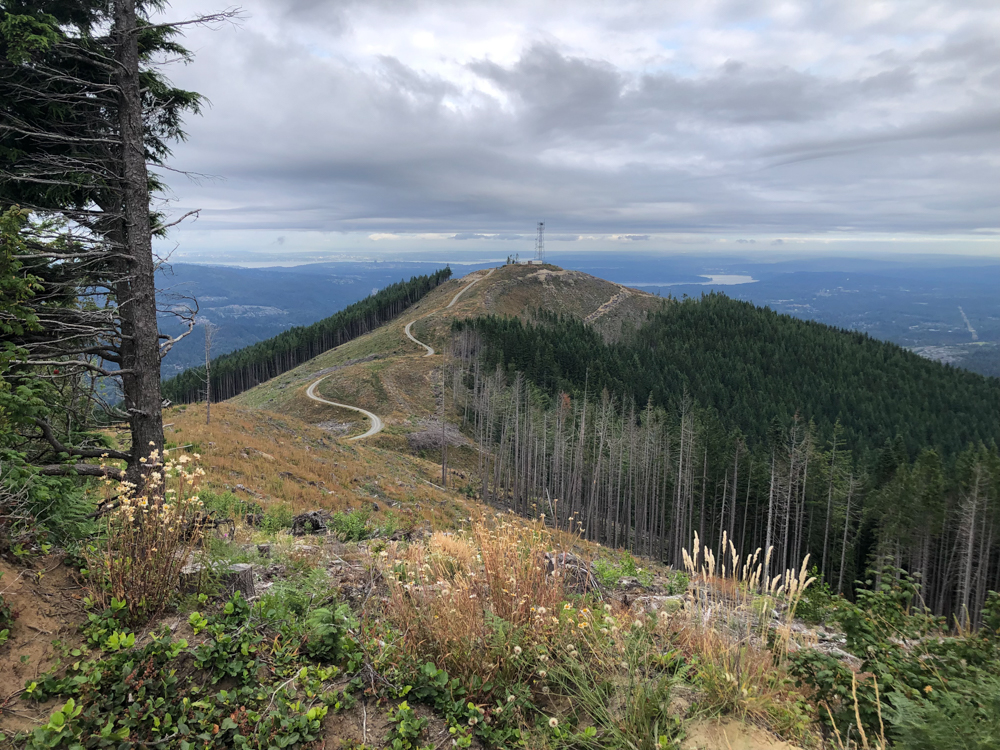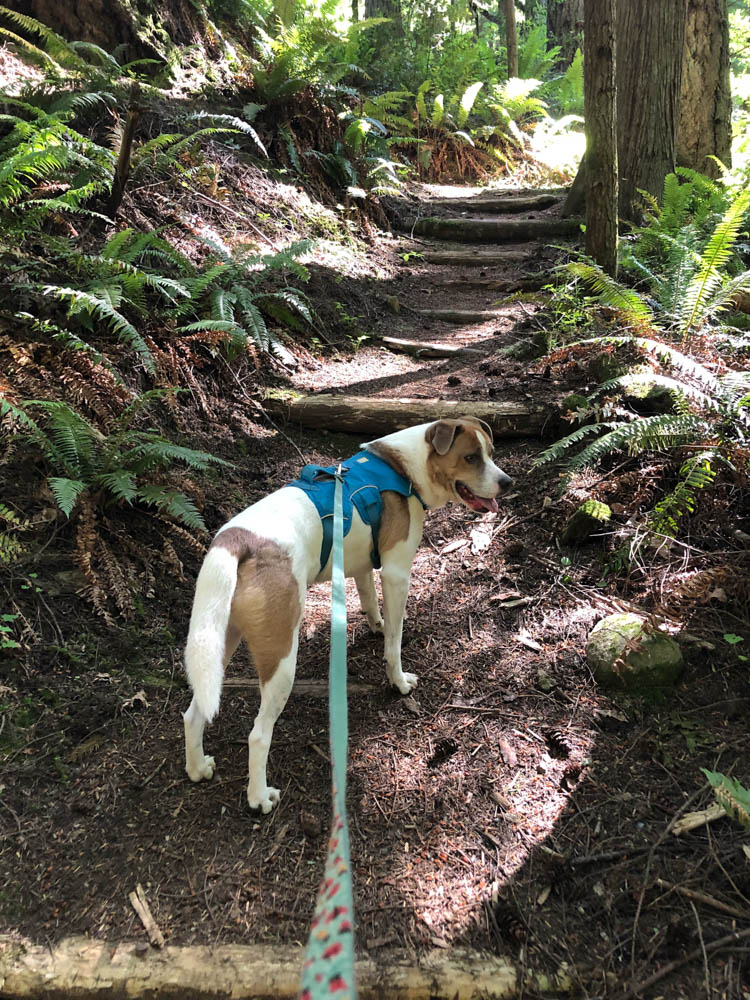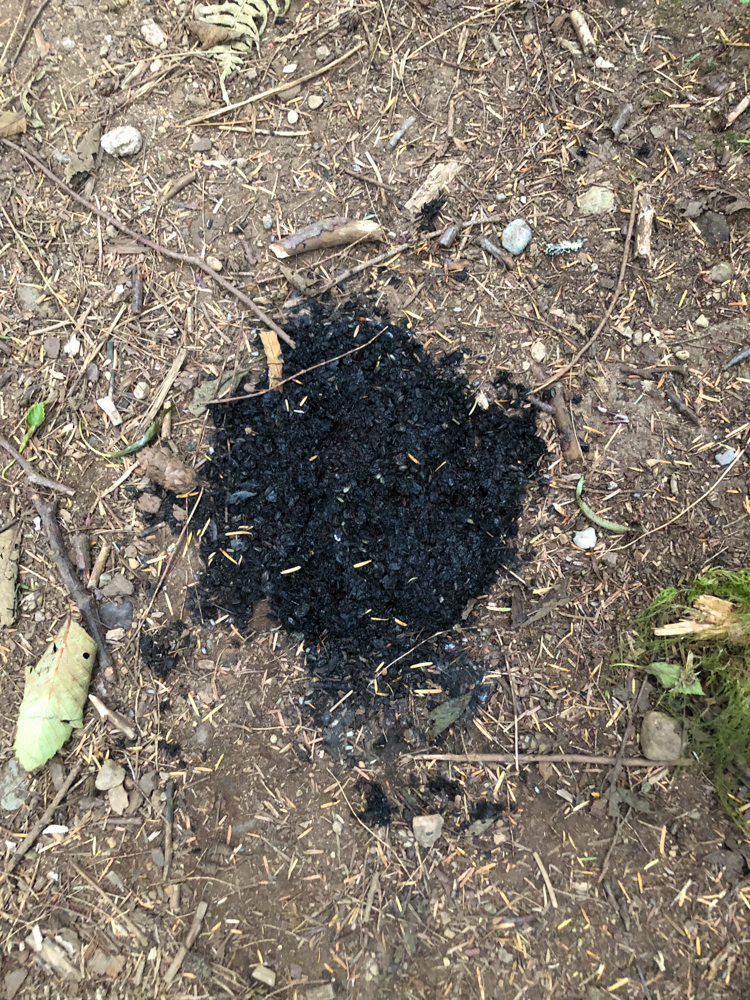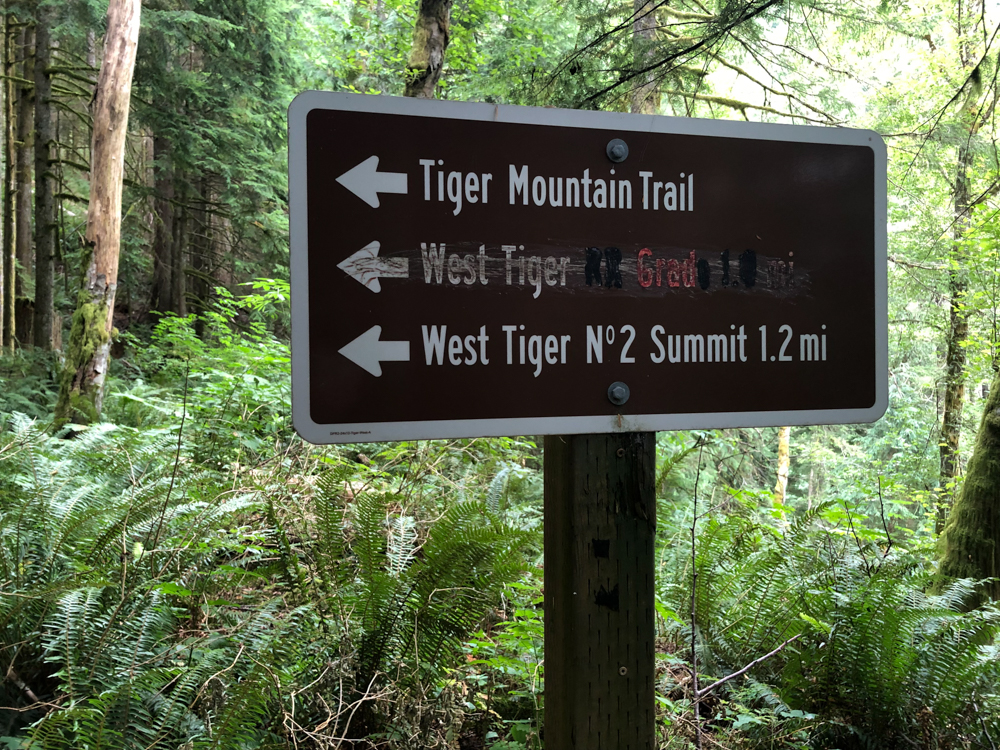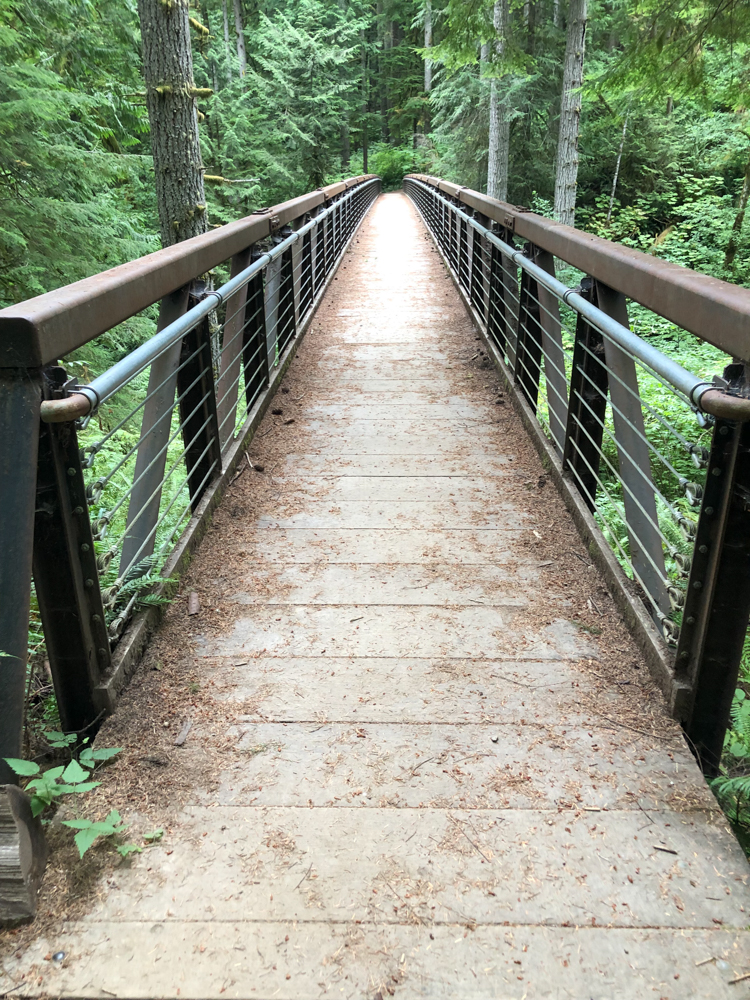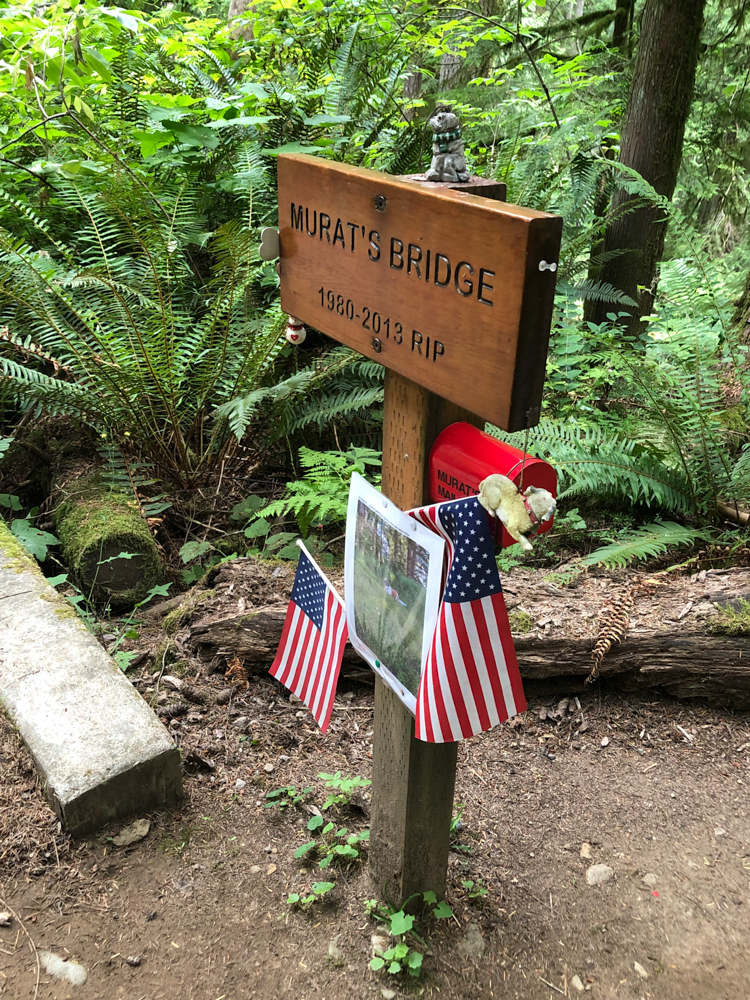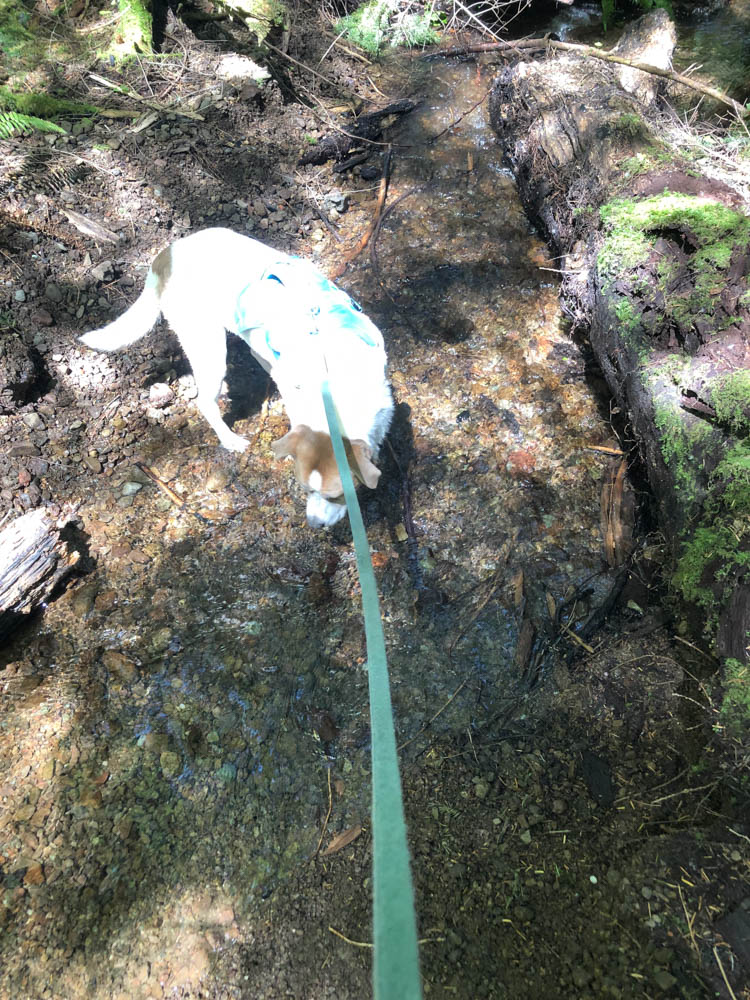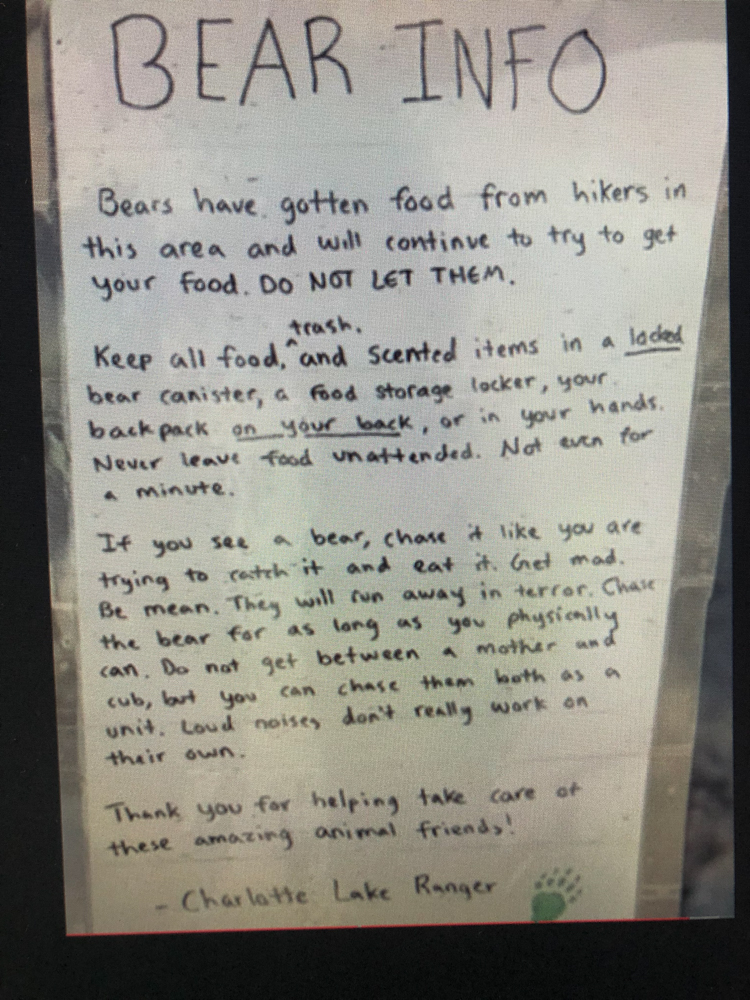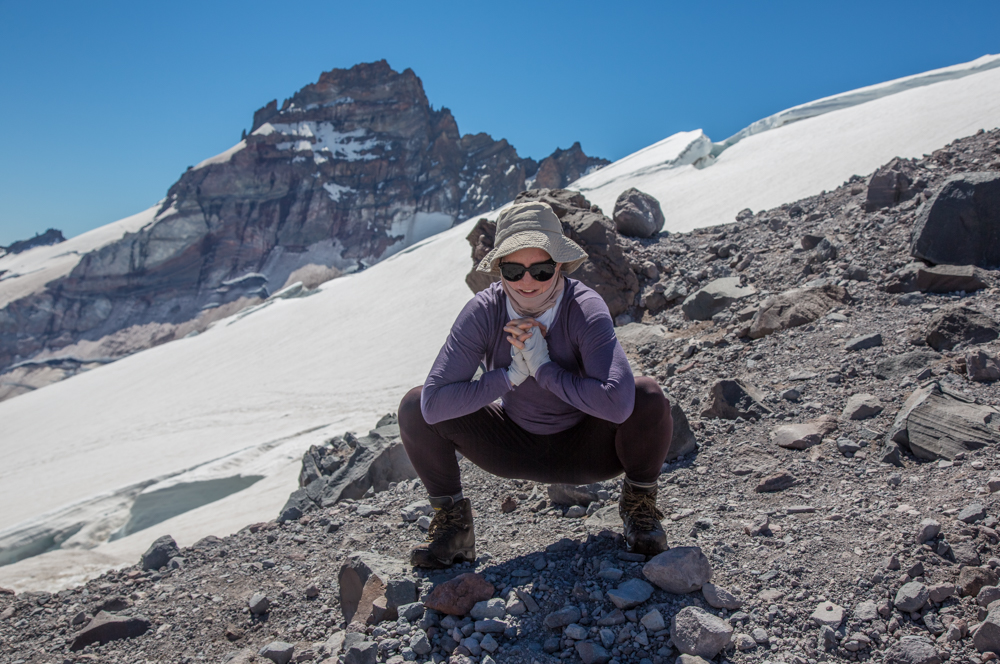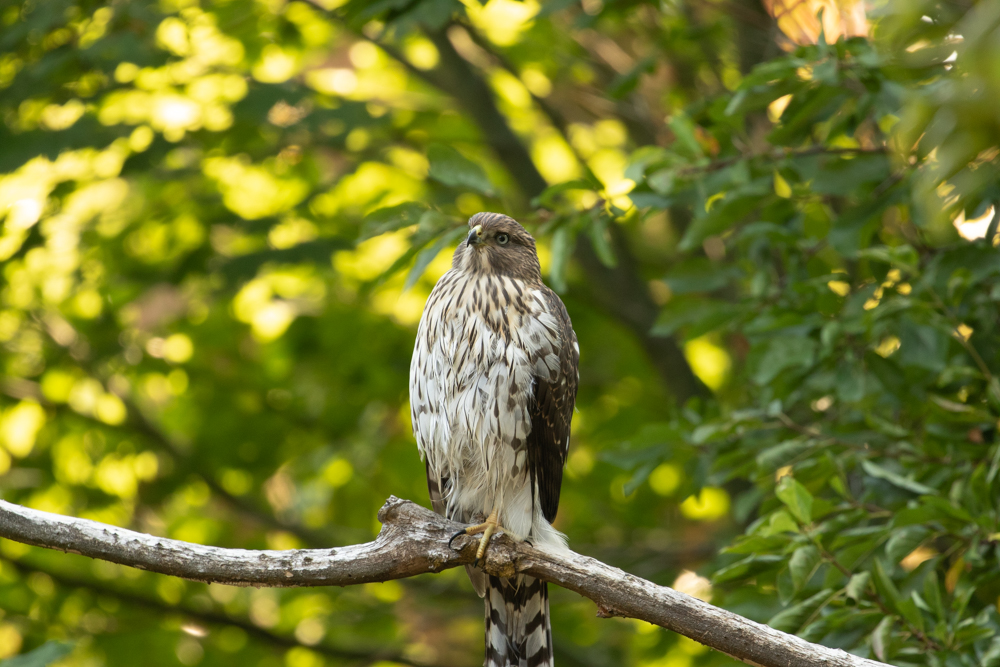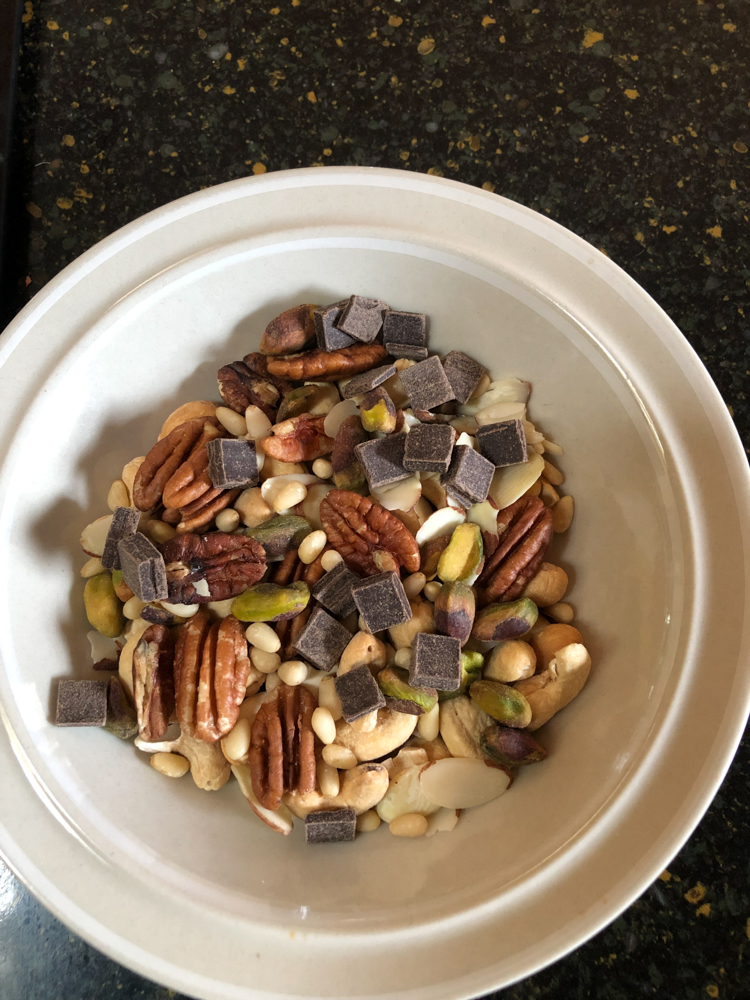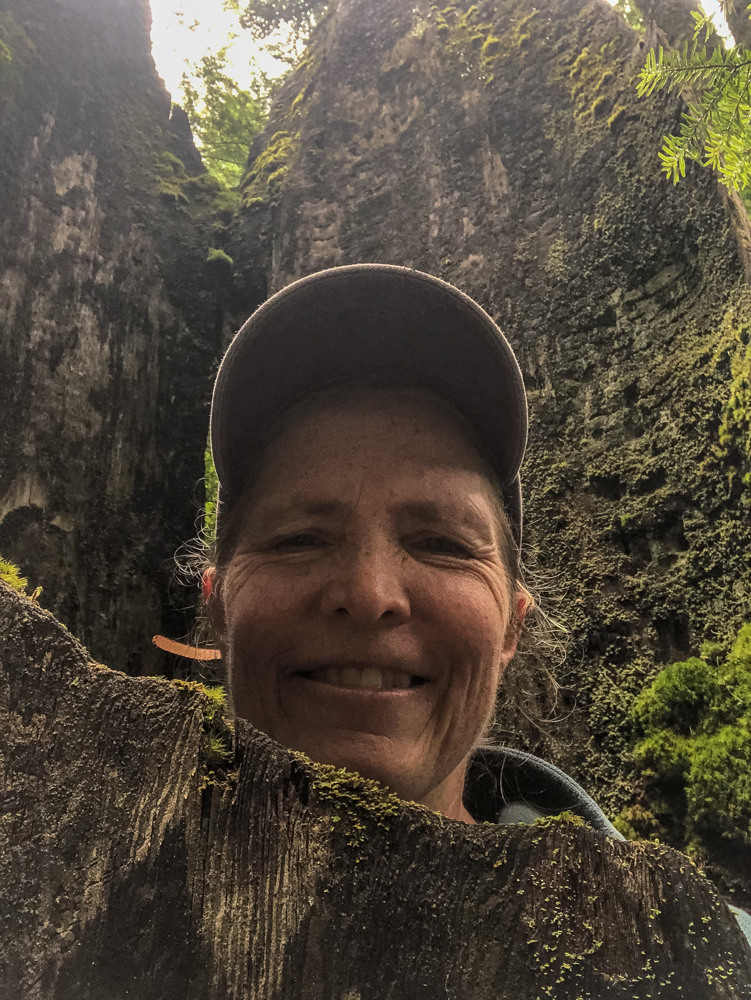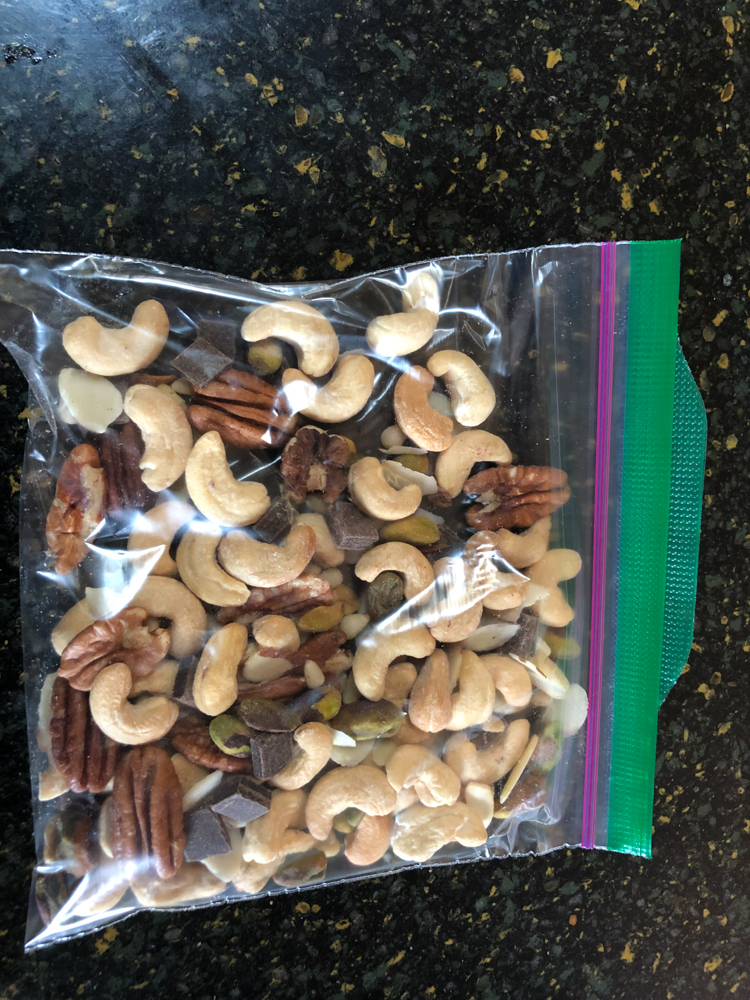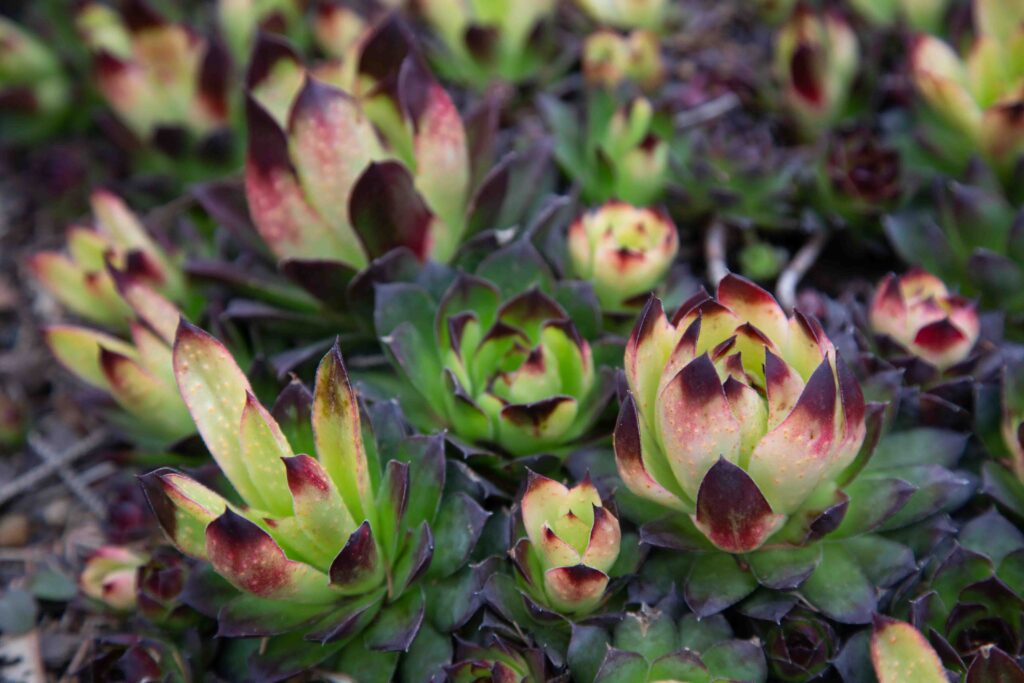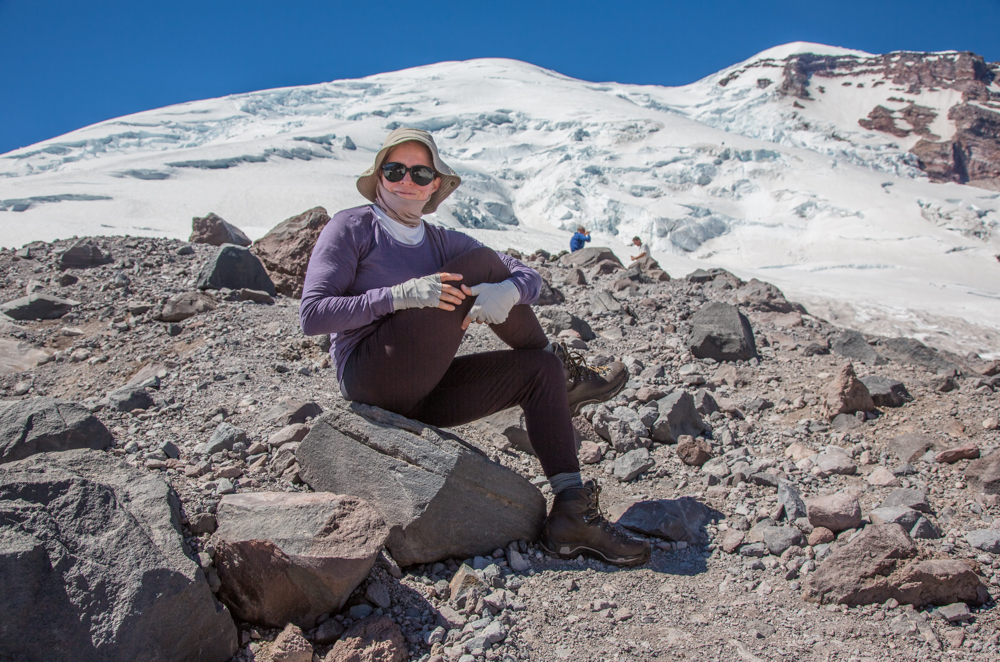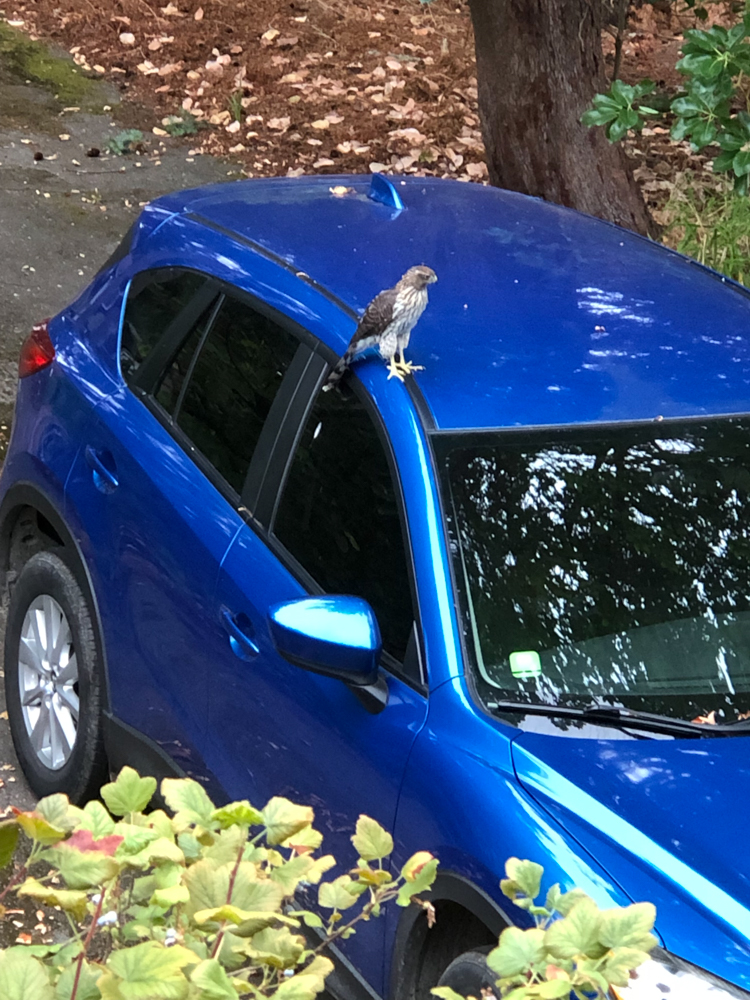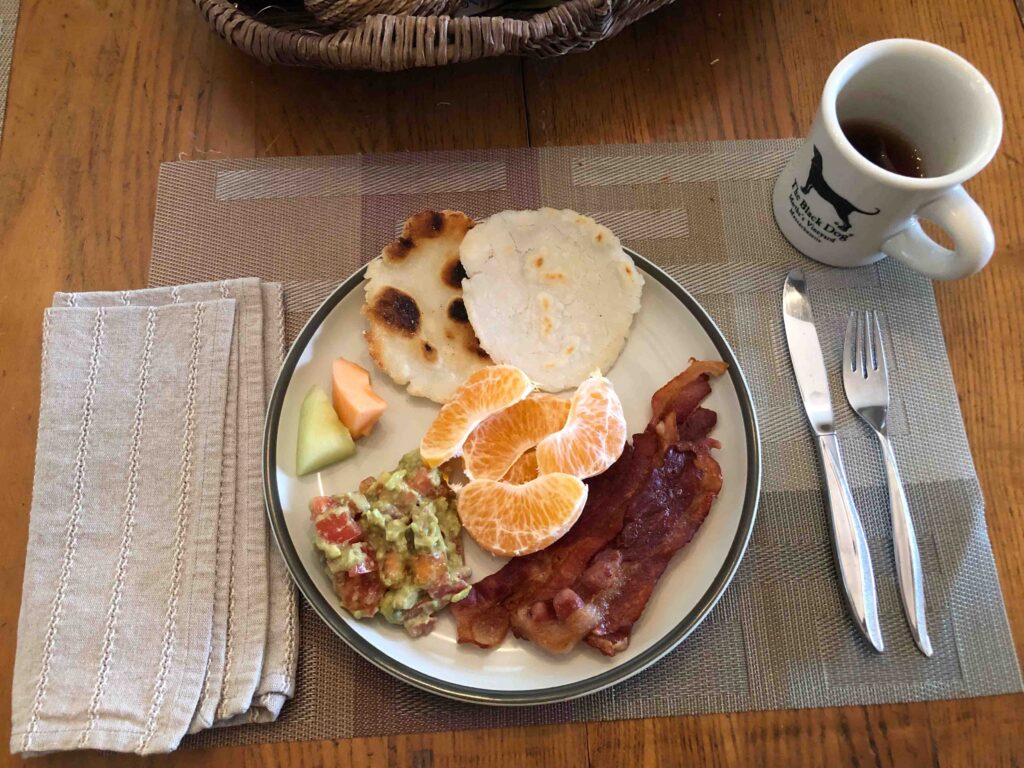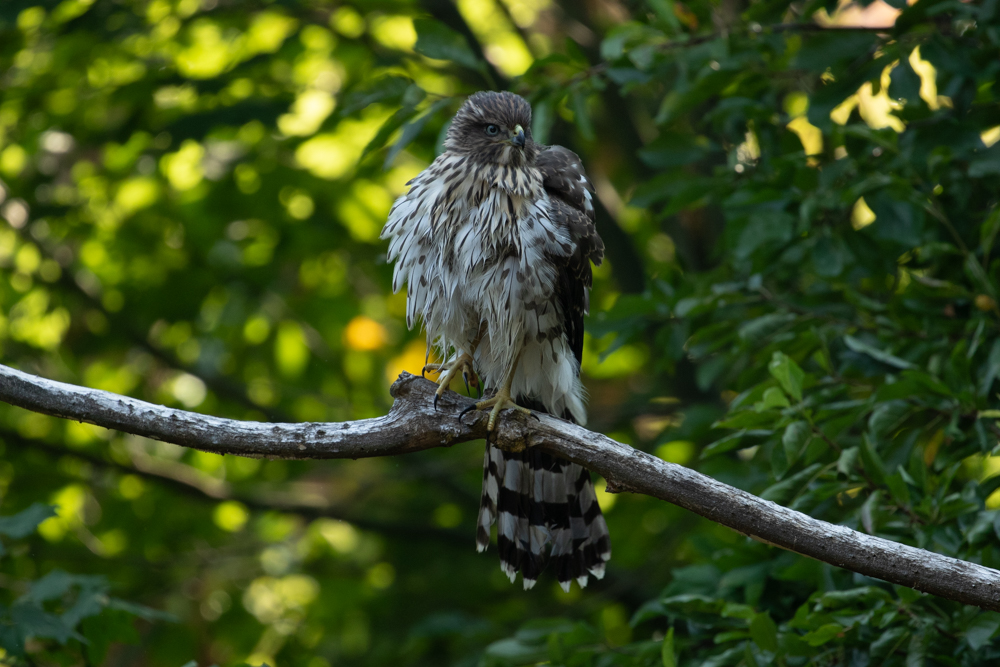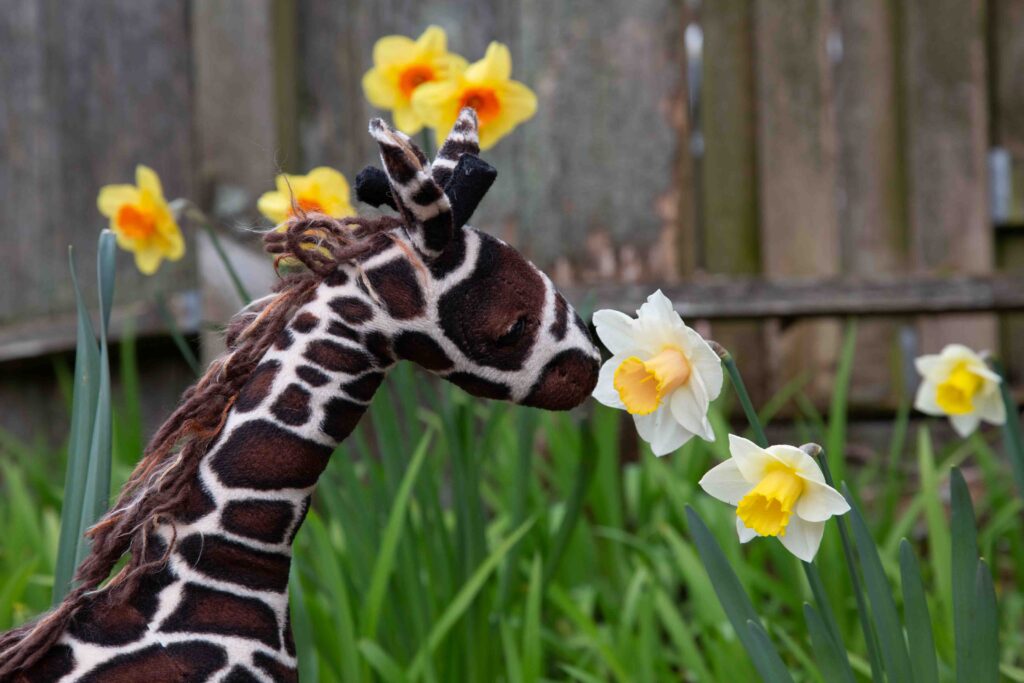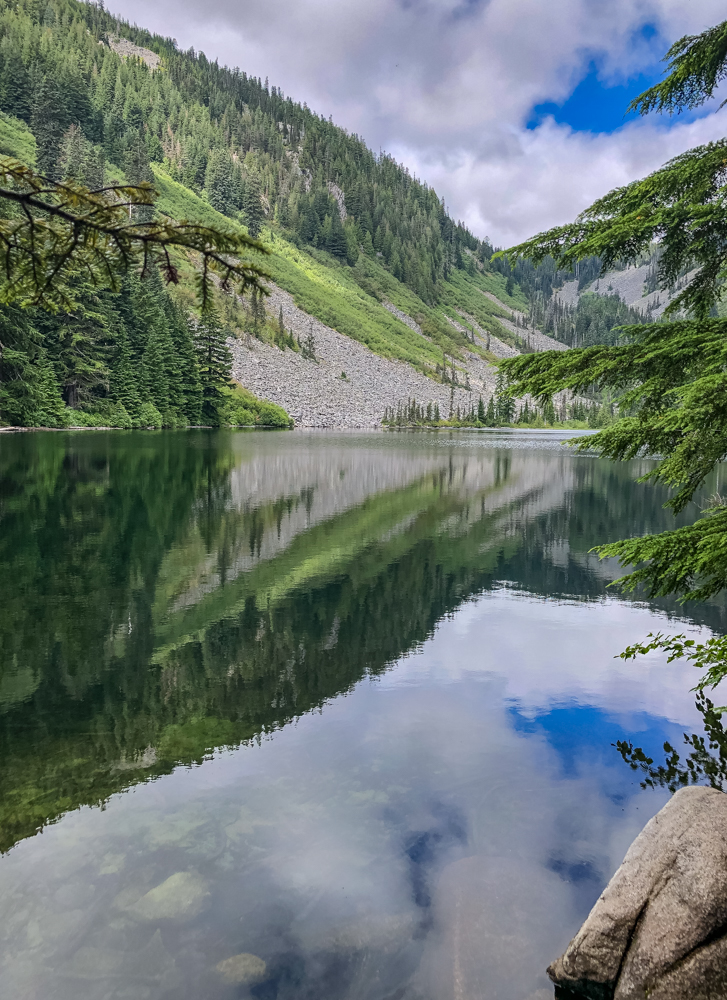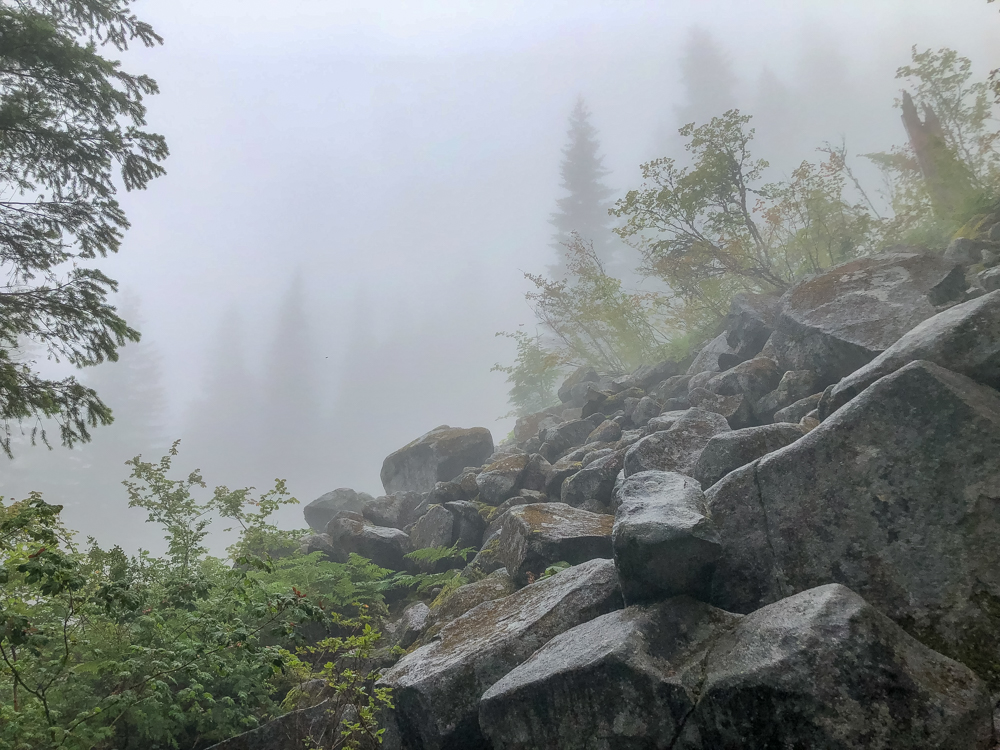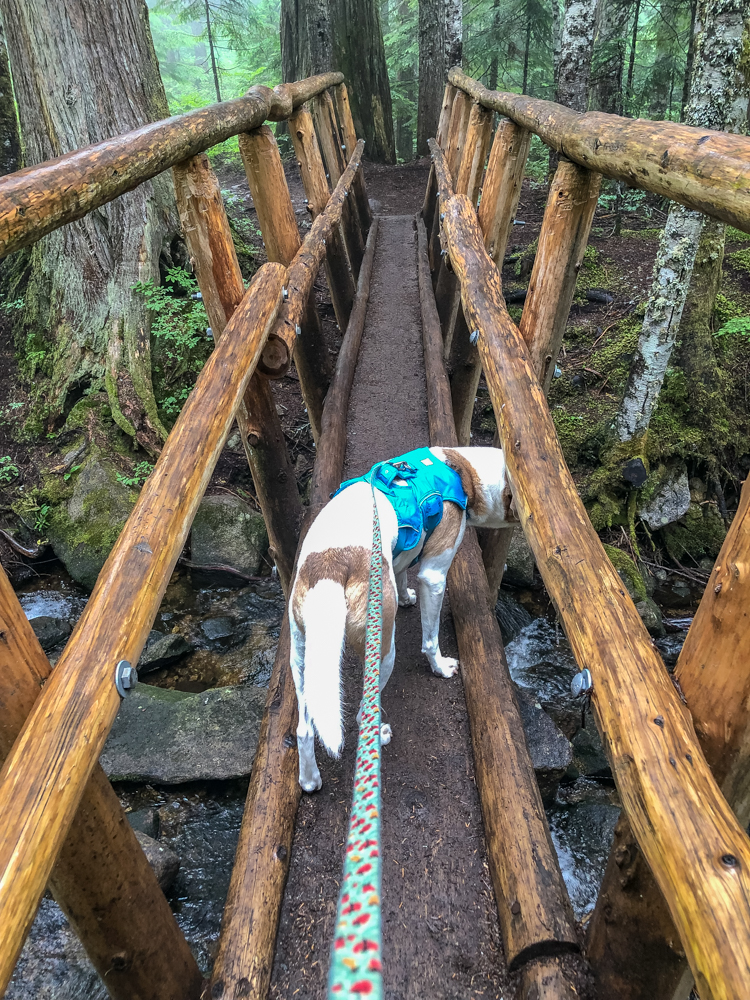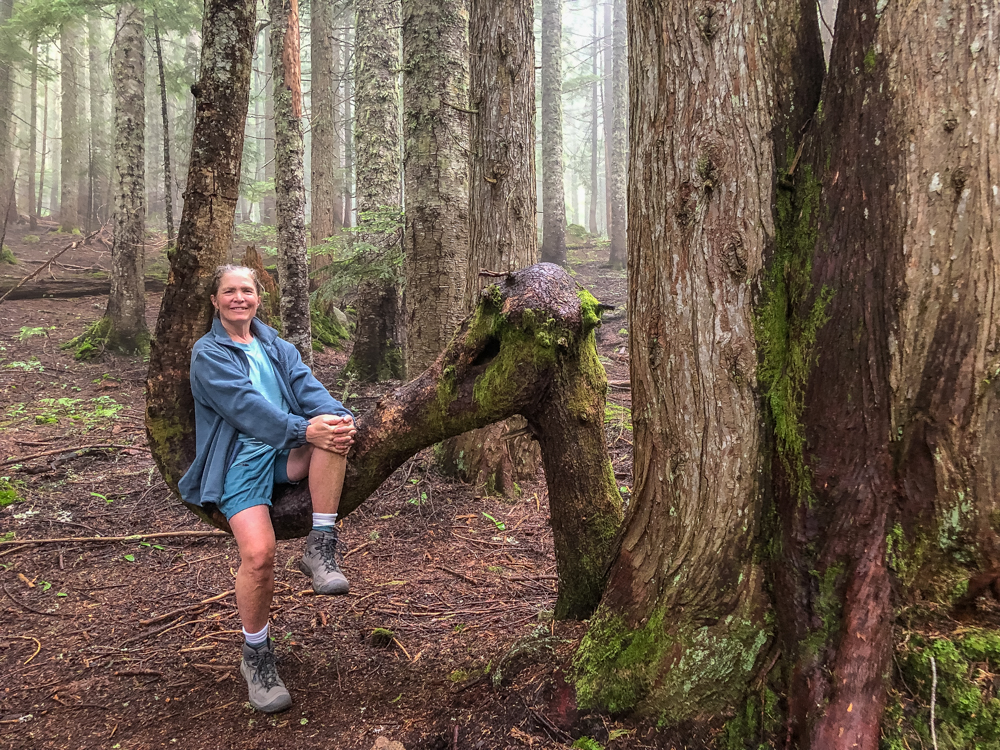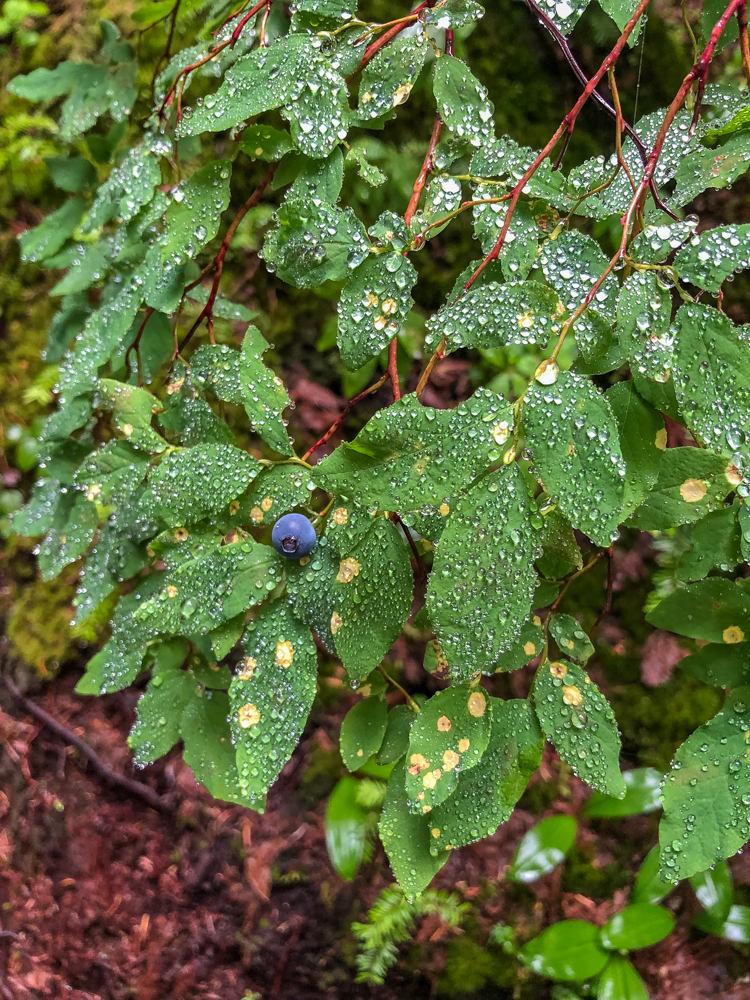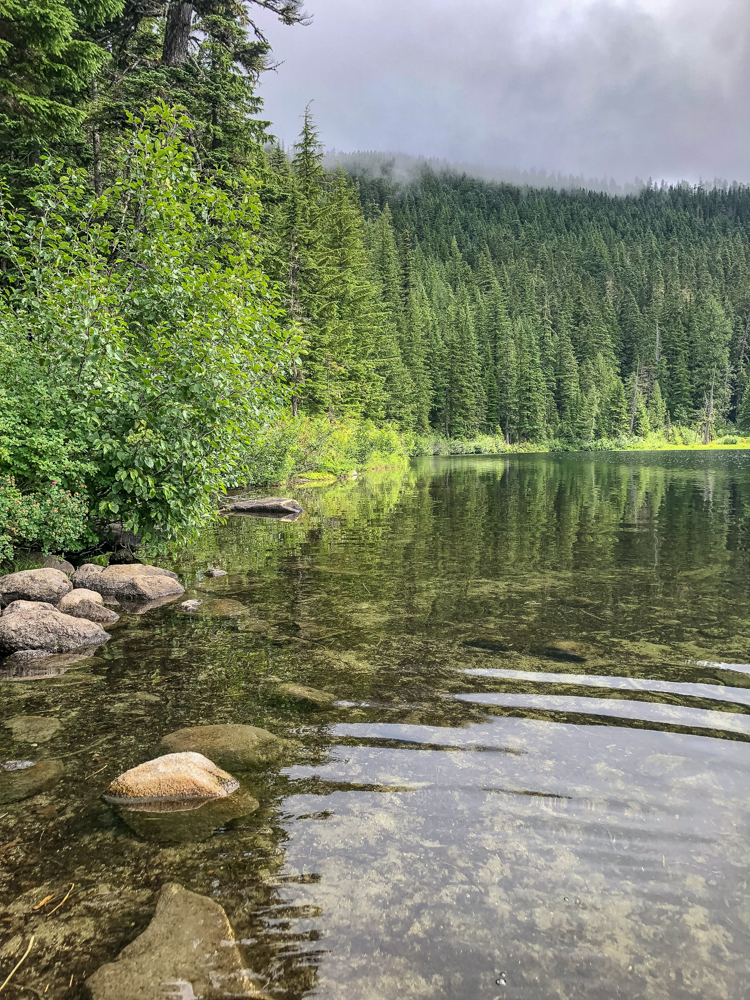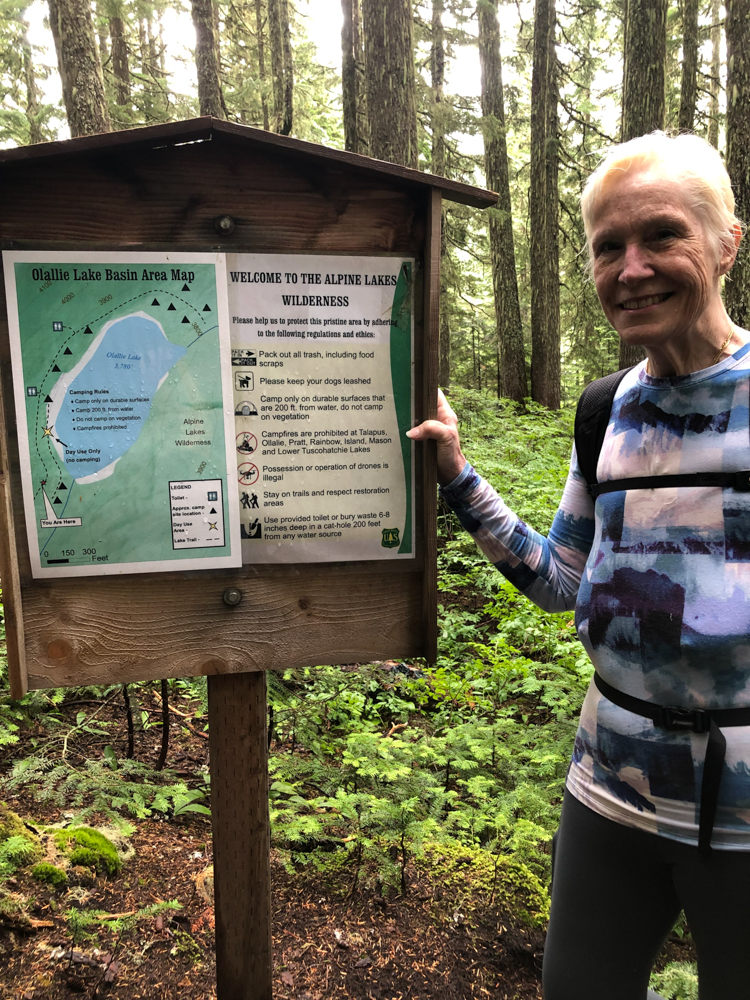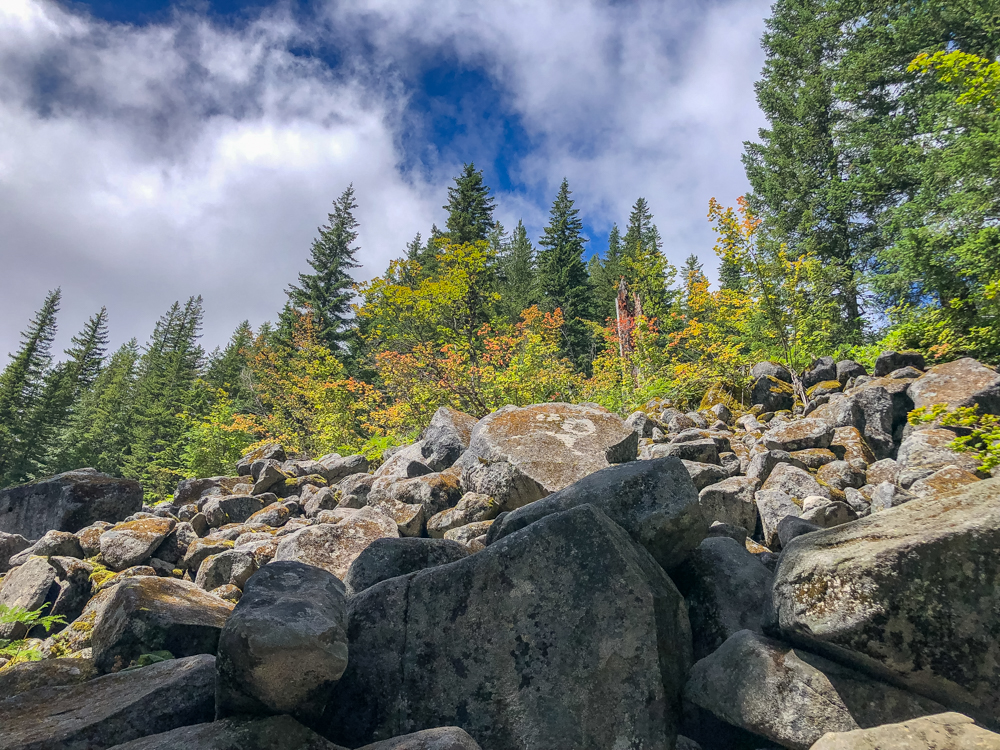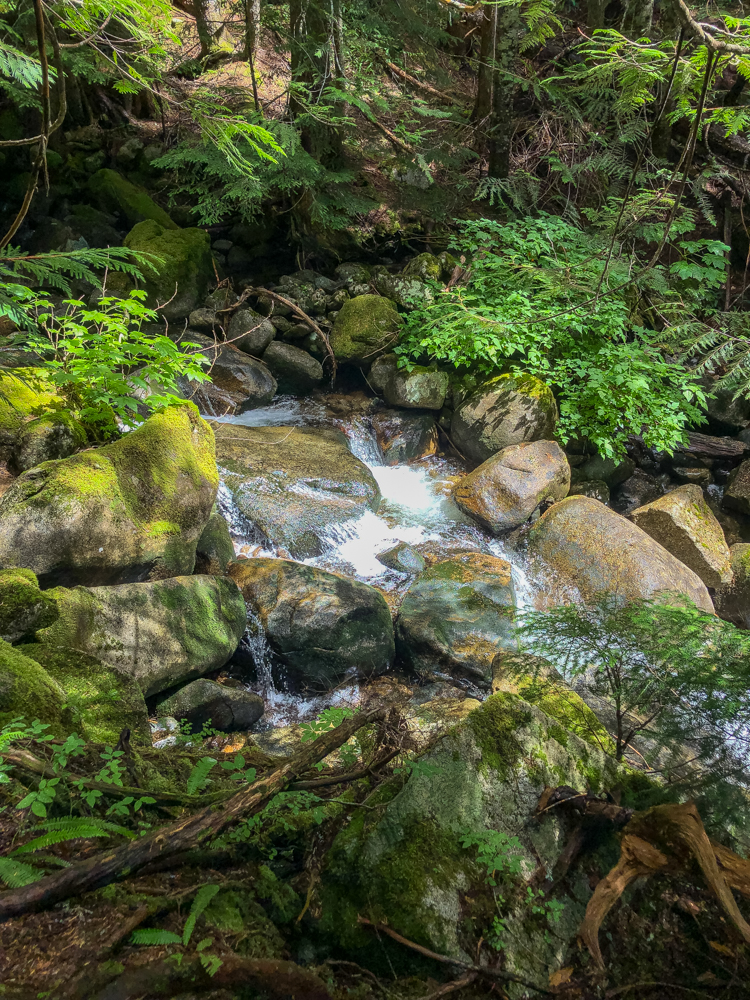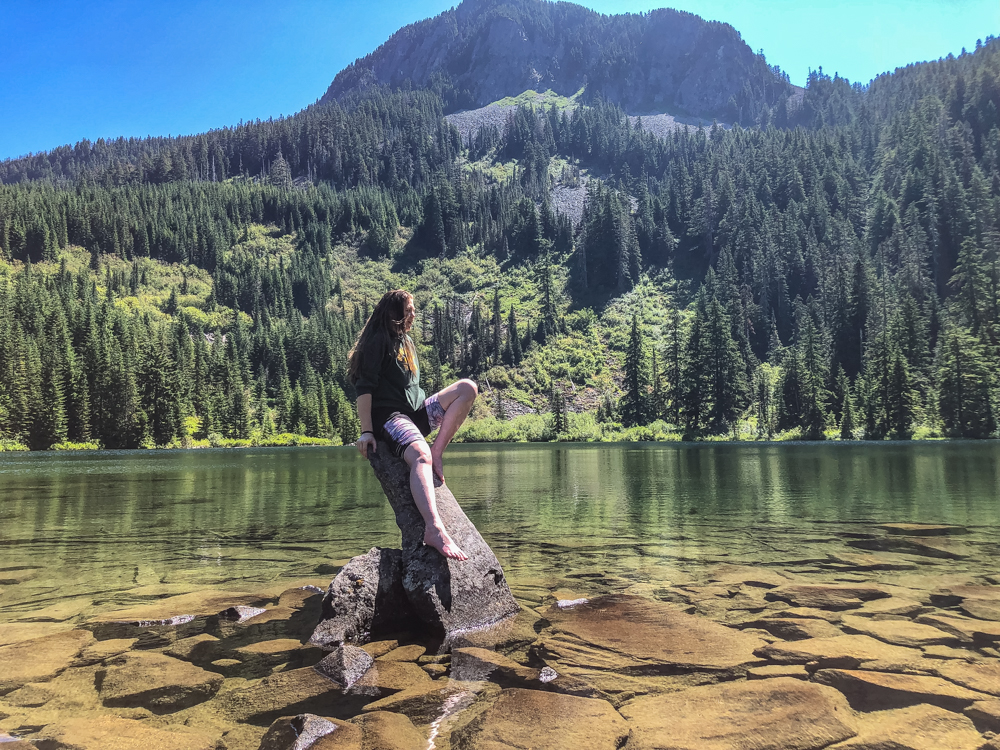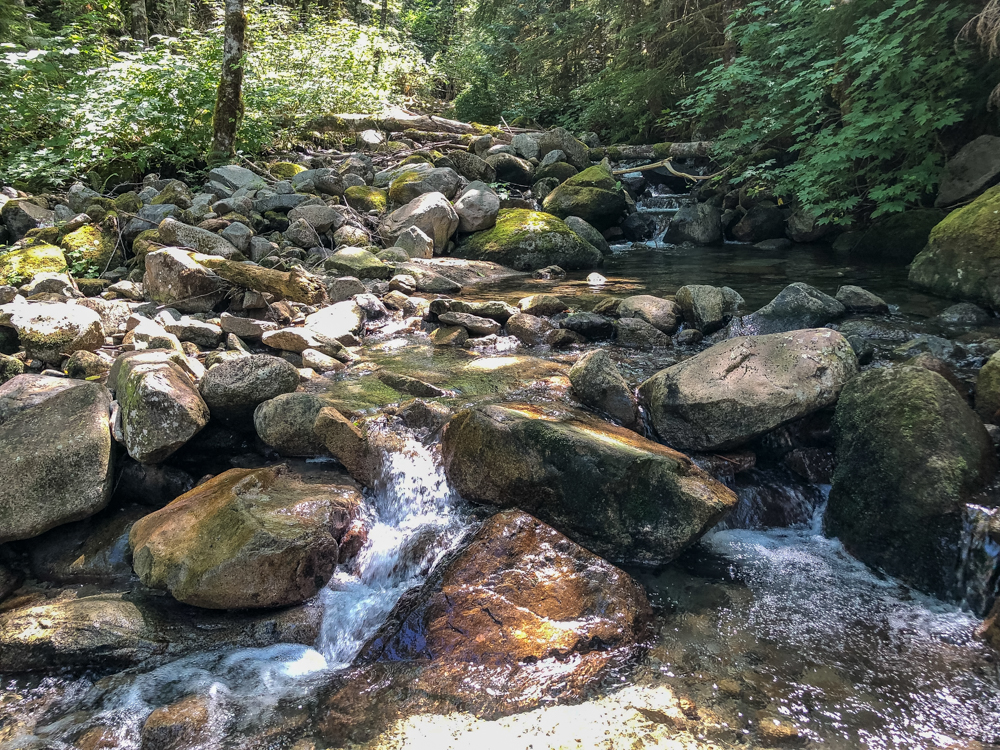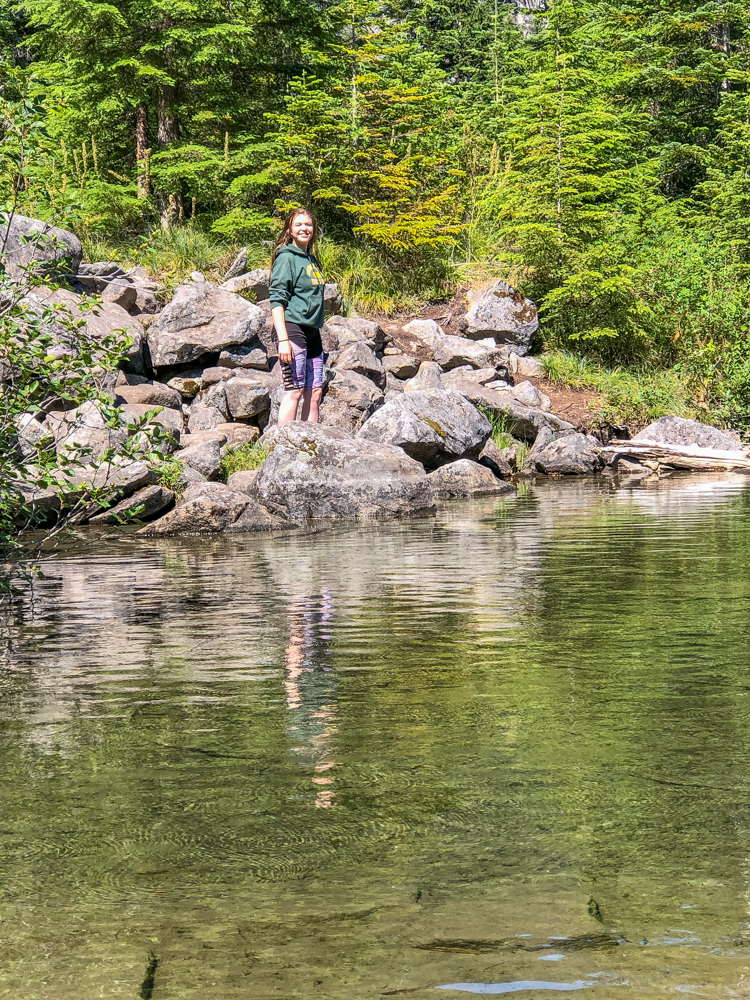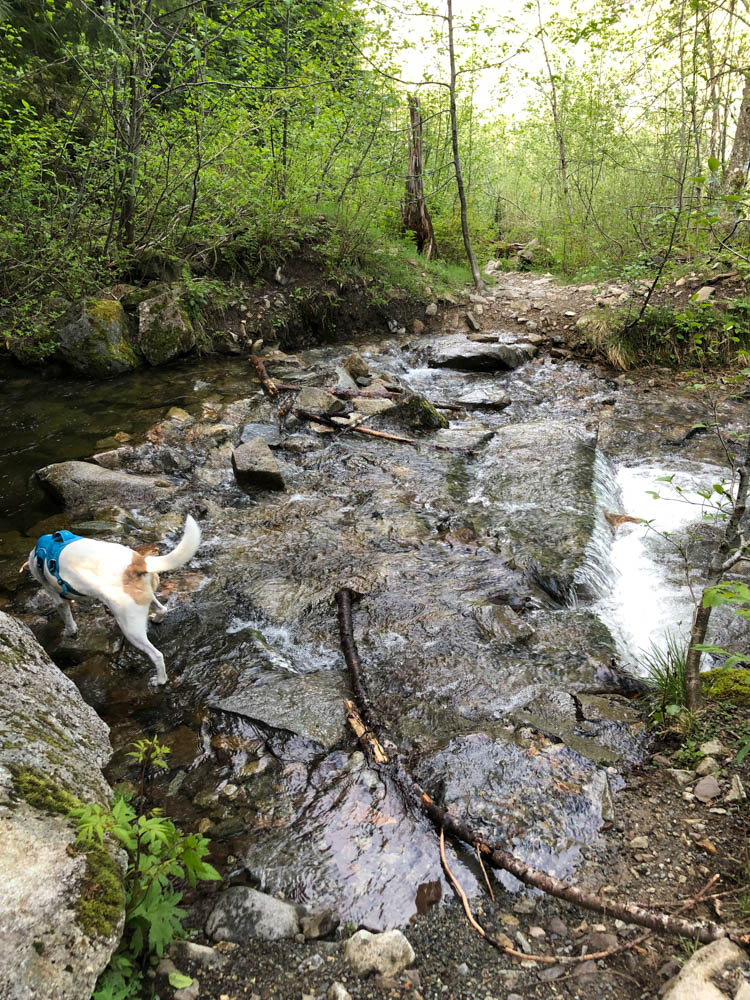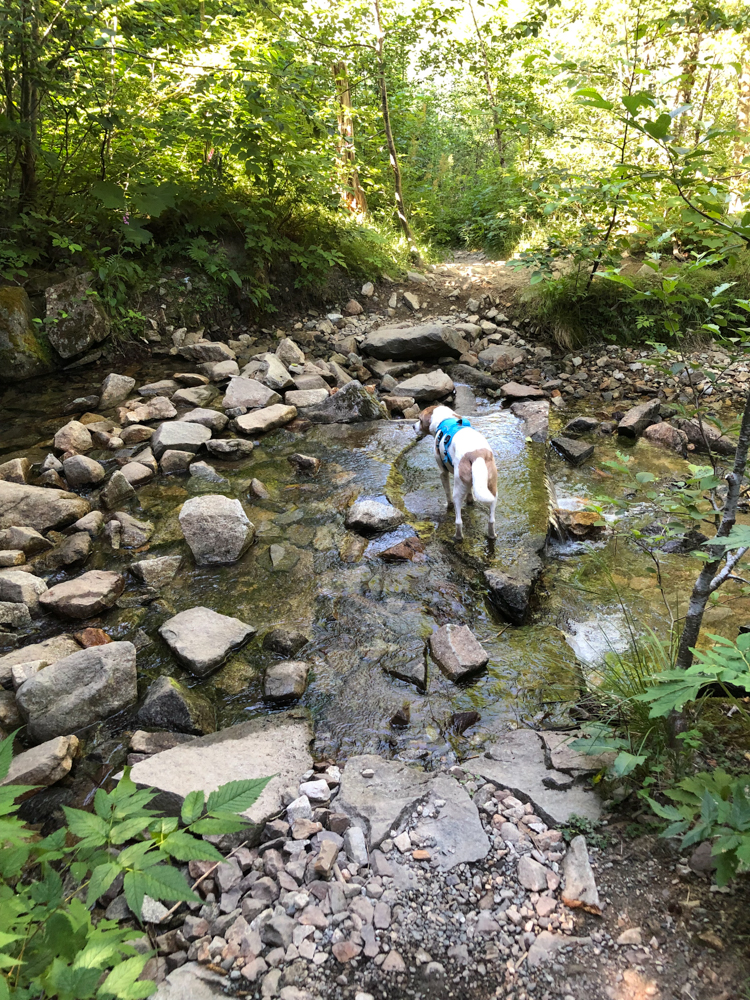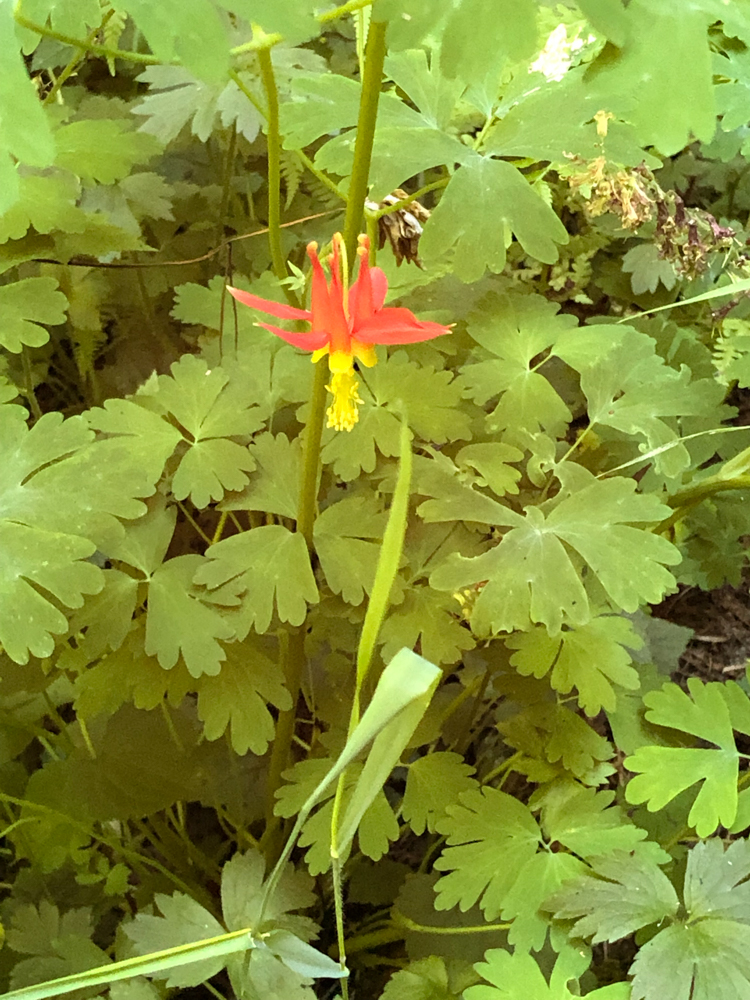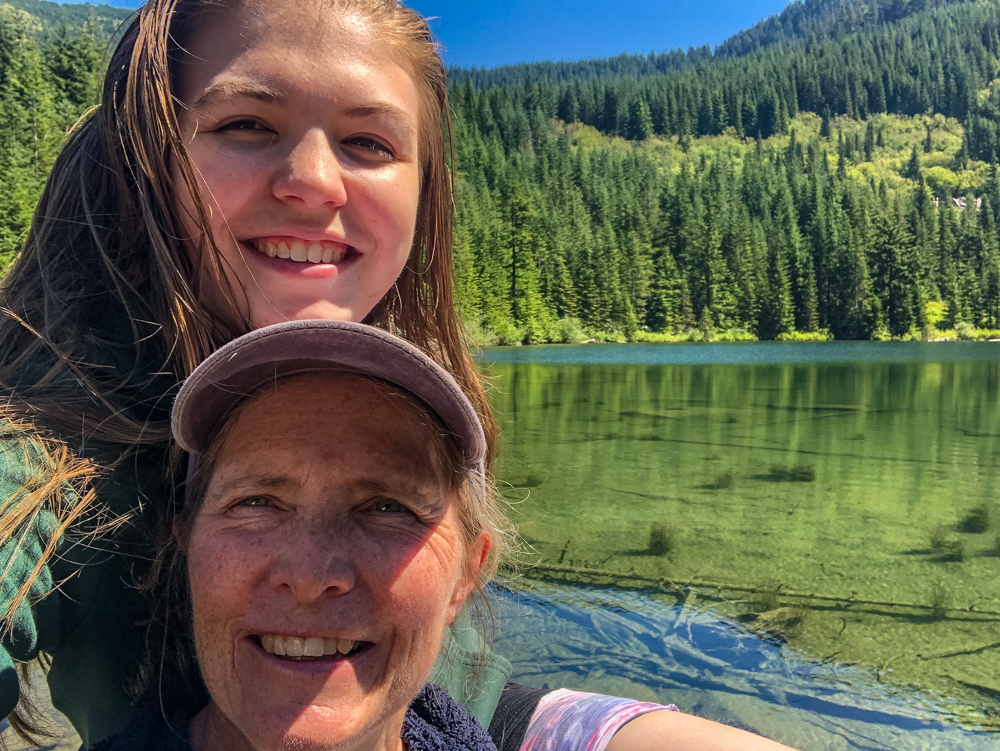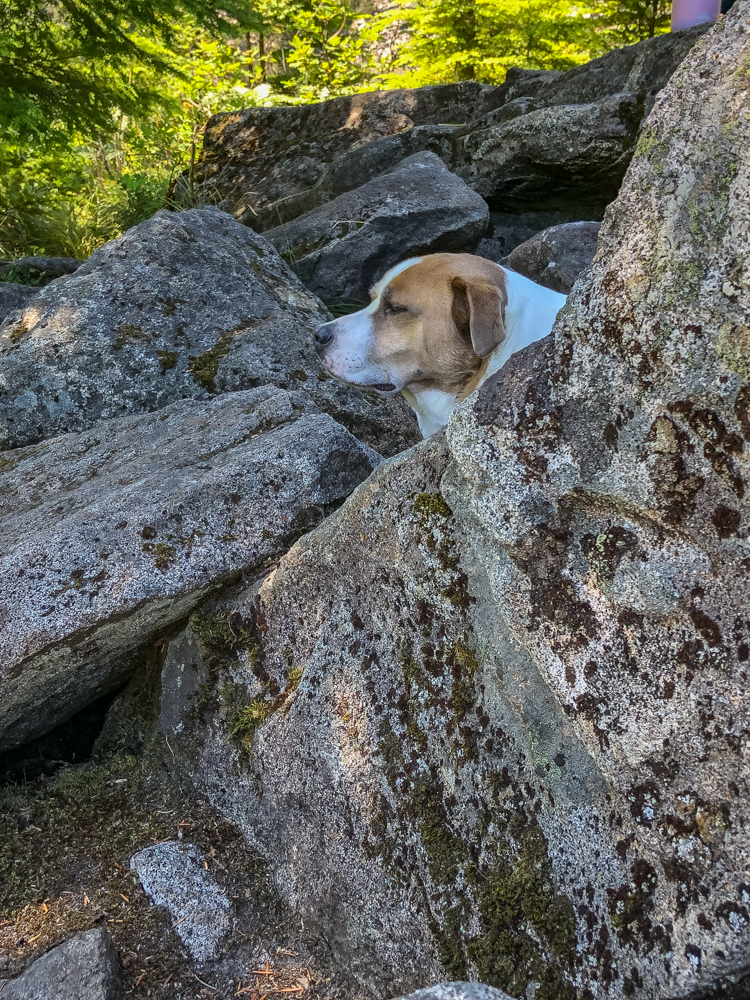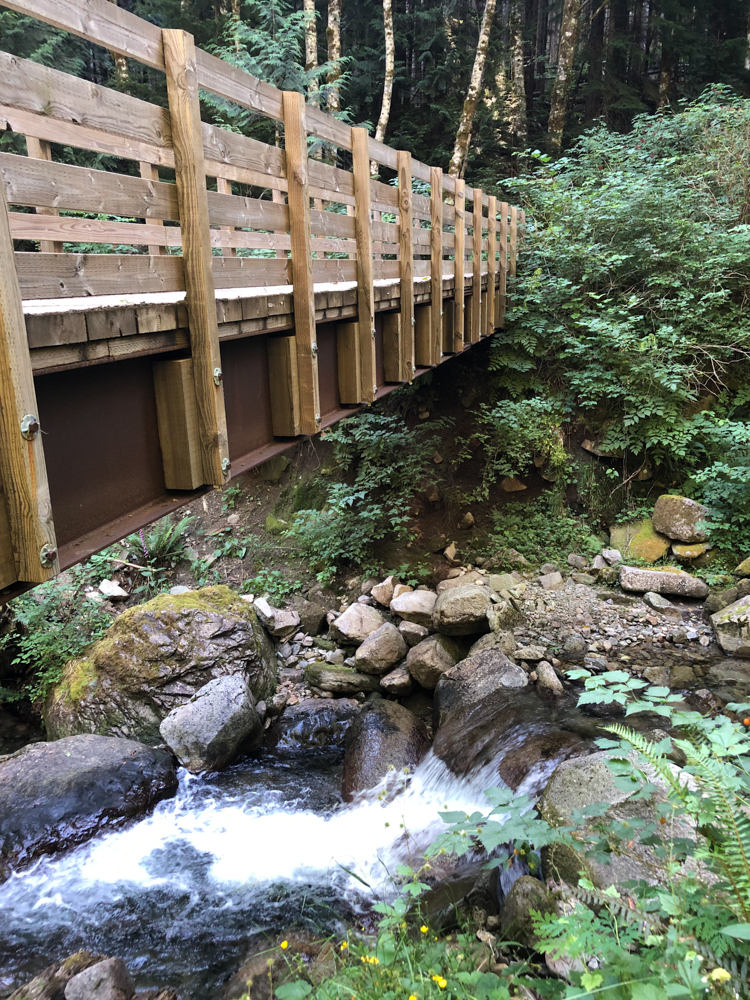On Tuesday, August 20, my daughter and I added another hike to our “recently completed Alpine Lakes” list. I’d given her the choice between Mason Lake and Blanca Lake. We decided to save Blanca for the following week, hoping for better weather. Our foggy, soggy visit made me think of how we might more fully enjoy rain. The berries, changing fall colors, and fading wildflowers reminded me of how the changing season parallels life changes.
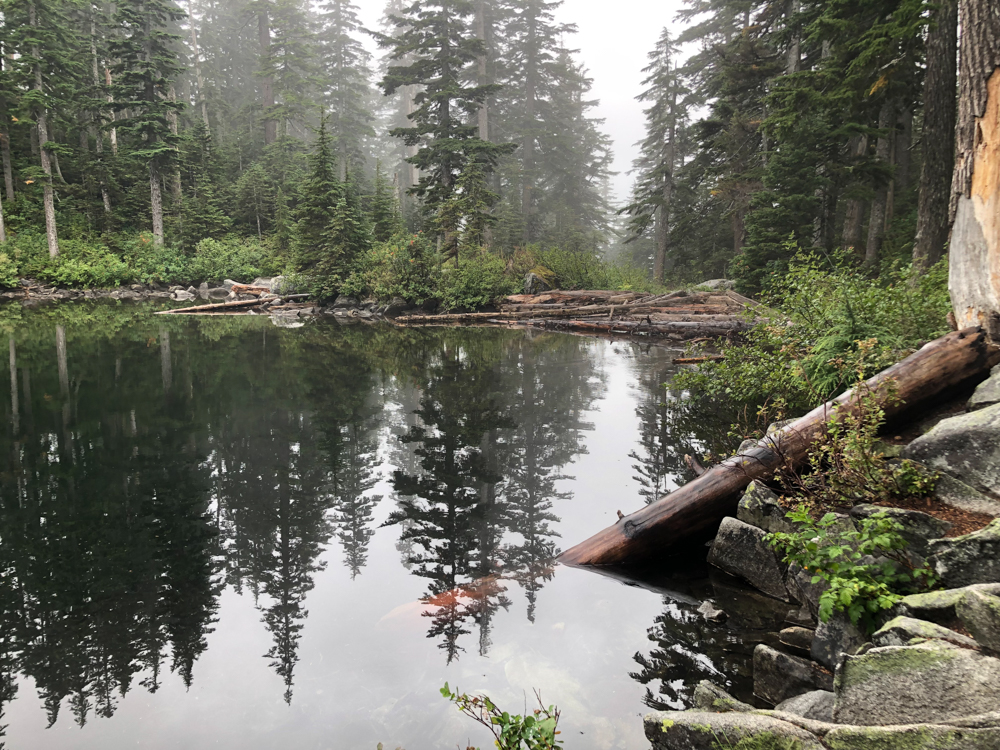
Why Hike in the Rain?
Most people would argue that summer in the Pacific Northwest is the best time to hike. My daughter, dog, and I disagree. I prefer hiking in the early morning, on shaded trails, or on overcast days to avoid heat and energy-zapping sun. As wildfires over the past few years have made summer hiking less pleasant, I’ve grown to appreciate shoulder season hiking. I’ve even written about enjoying rainy-day hikes including Wallace Falls (Father’s Day 2023) and McClellan Butte (May 31, 2024).
Rain keeps temperatures more comfortable and crowds away. When we arrived at the popular Mason Lake trailhead at 8:30, there were only ten cars in the parking lot. And by the time we returned, we counted thirteen. Usually, by 2 on a summer afternoon, the Mason Lake Trailhead lot is full to overflowing.
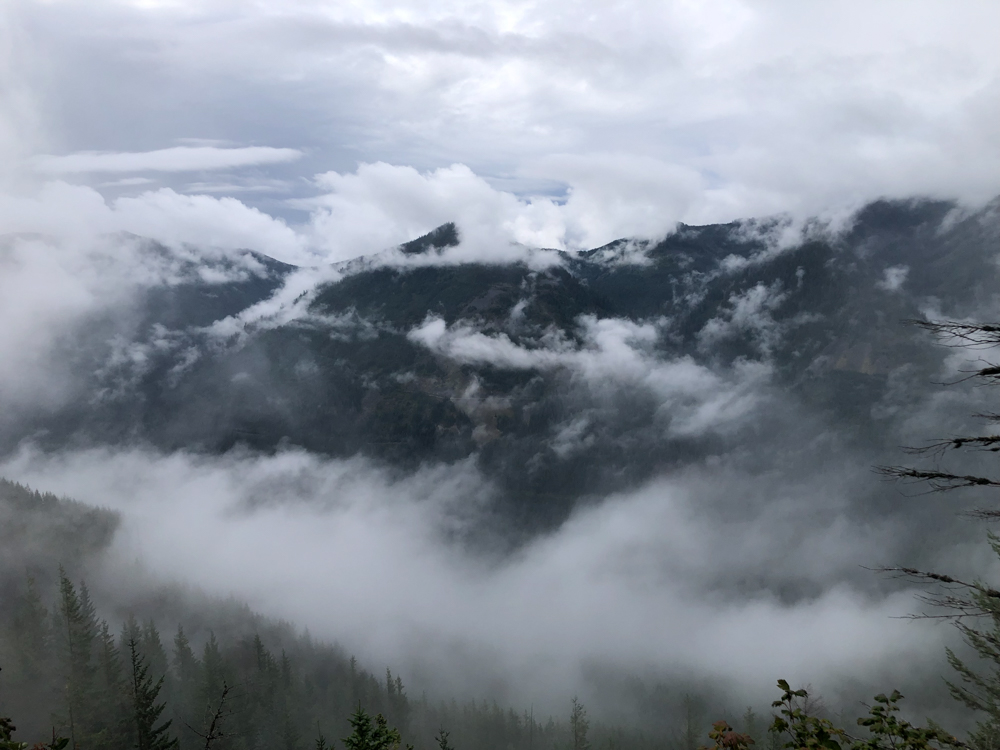
Rain helps minimize the dust and reduces fire threats. It adds texture, flavor, and dimensionality to atmospheric photographs. Unfortunately, on this hike, my daughter forgot to charge her phone on the hour-long drive, so she started the hike in a sullen mood. While I promised to take whatever photos she wanted, I also wanted to protect my phone from the rain. As much as I wanted to enjoy rain, the reality is it can destroy your phone!
Rain Considerations
My new waterproof Frogg Toggs rain jacket worked great, but without pockets or a long hem to cover my shorts, I had to keep my hand over my phone to keep the rain from soaking in. I’d left my pack rain cover at home, but at least I had a plastic bag to protect my wallet and journal. After hiking 1.6 miles, we stopped to take a break before the trail started to climb in earnest. One look at her “drowned cat” photo (her coat was water-resistant, not waterproof) had us both cracking up. The silence was broken, and we could enjoy ourselves.
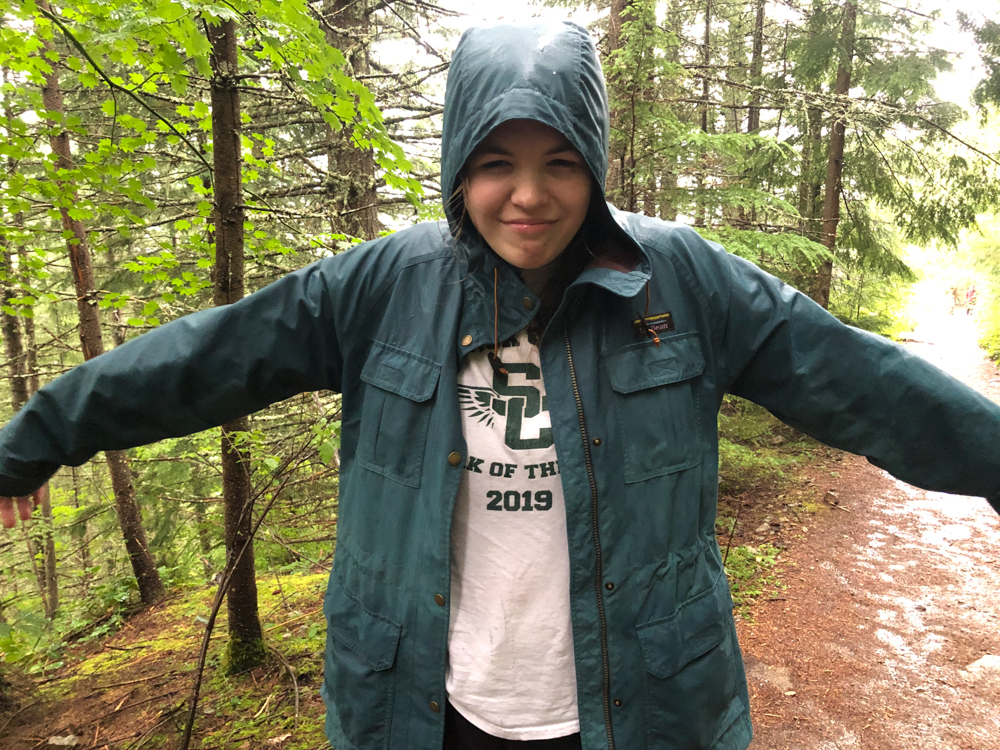
Takeaways
If you are considering hiking in the rain, you might want to add the following items to your basic packing list to stay comfortable.
- Waterproof jacket and pants
- Pack cover to keep your pack contents dry
- If you don’t have a cover, a trash compactor bag inside of your pack also works great
- Gaiters, which are ankle covers for your boots to keep rain (and snow) out of your boots, and socks dry
- Cell phone protector – I just ordered one for my upcoming trip to Iceland, since we’ll be there at the start of the rainy season
Enjoy Rain as a Seasonal Transition
Our hike to Mason Lake presented us with three gifts that reminded us of our goal to enjoy rain: we caught the tail end of wildflower season, including Beargrass stalks, fireweed, Indian paintbrush, pearly everlasting, and lupines. While we only heard seven bird species, we spotted a pica and heard several others in the talus slopes.
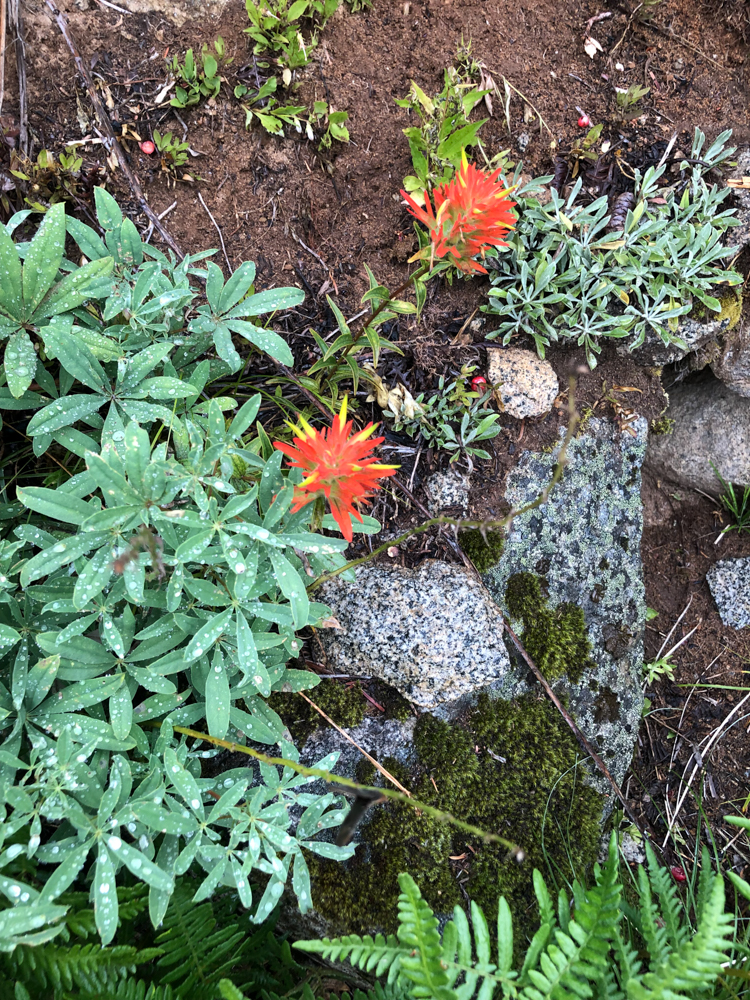
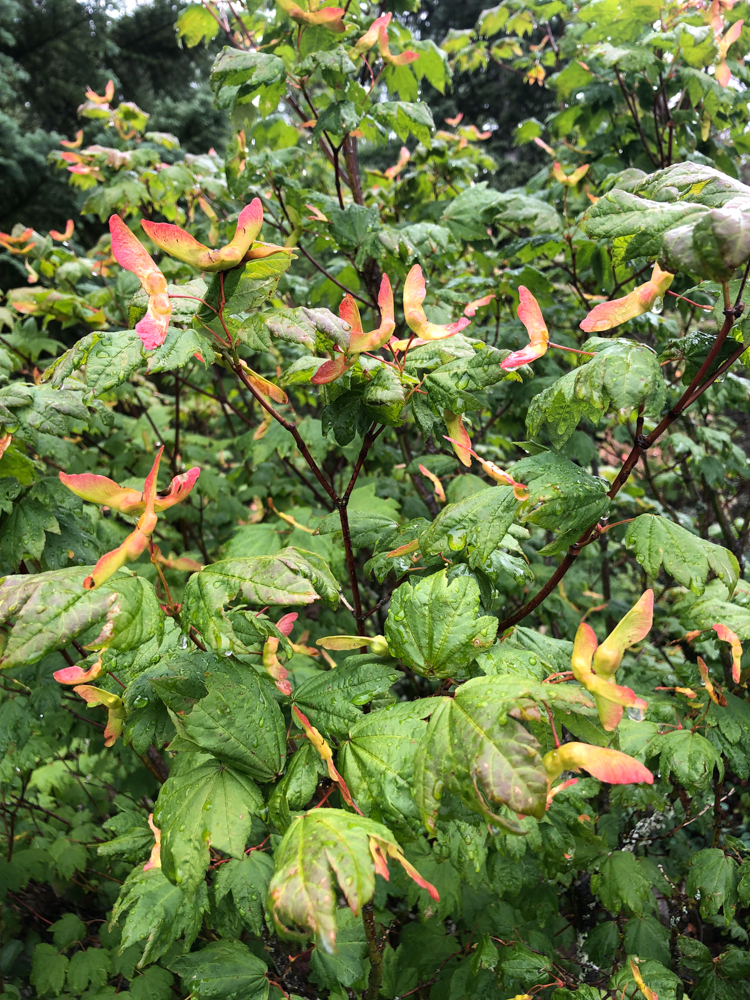
The maples are just starting to turn color in places, sparking joy in me as I recalled some glorious fall hikes I’ve shared in this blog, including last year’s October hike to Granite Mountain and another to Snow and Gem Lake in 2022. While fall feels like it’s arrived earlier than usual this year, I know when I return from Iceland there will be plenty of opportunities to catch beautiful fall colors.
And the best seasonal transition of all is TONS of delicious thimbleberries, blueberries, and huckleberries. We spent an hour collecting huckleberries near the lake and as we traversed the boulder field, in part waiting to see if the clouds would disperse and also because we’ve enjoyed other hikes to collect berries including on Mt. Catherine two summers ago and last August at Peek-a-Boo Lake.

Takeaways
Change is hard but unavoidable. We may want things to stay exactly the way they are, but maybe we can build our “change muscles” by identifying things to look forward to. For hiking in the fall, fewer people on the trails, beautiful autumn colors, and cooler temperatures excite me even though I know one of my summer hiking partners will be returning to college soon. I can continue to enjoy rain for the next eight months.
Losing a hiking partner – temporarily or permanently – may feel like a huge loss, but when I think about trails I could explore that my current partners cannot, I get excited about the possibilities. A mother facing an empty nest might embrace change as a way to learn more about herself and where she wants to head in the next few years. Someone starting a new job might anticipate meeting different people, receiving benefits, and learning new skills. Just as Mother Nature adapts to the changing seasons, so, too, must we.
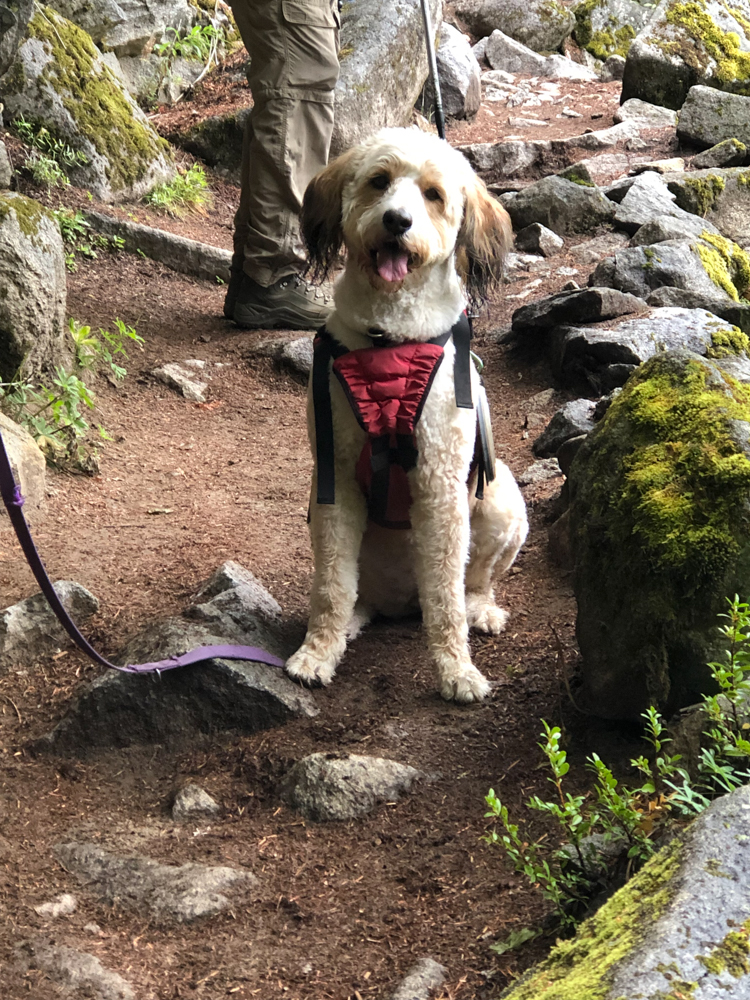
Navigating Unpredictability
One thing we expected from a mid-August hike was warm temperatures so we could swim in the lake. With temperatures in the low 60s, we didn’t see anyone swimming, but we did see one family carrying fishing gear. Back home at the last minute, I shoved a fleece jacket and down coat into my pack. They’re light and compressible. I never expected we’d use both on the descent. Something else I will add to my pack for future hikes: a large gallon-sized bag or collapsible plastic container that doubles as a berry bowl or trash container.
What I did not expect was slowing down as we traversed the boulder field. Historically, I’ve sped up to get to the shade so the heat won’t negatively impact my dog. But without him along, and with so much to see in the open space, we took our time to enjoy the berries, picas darting among the rocks, and changing foliage.
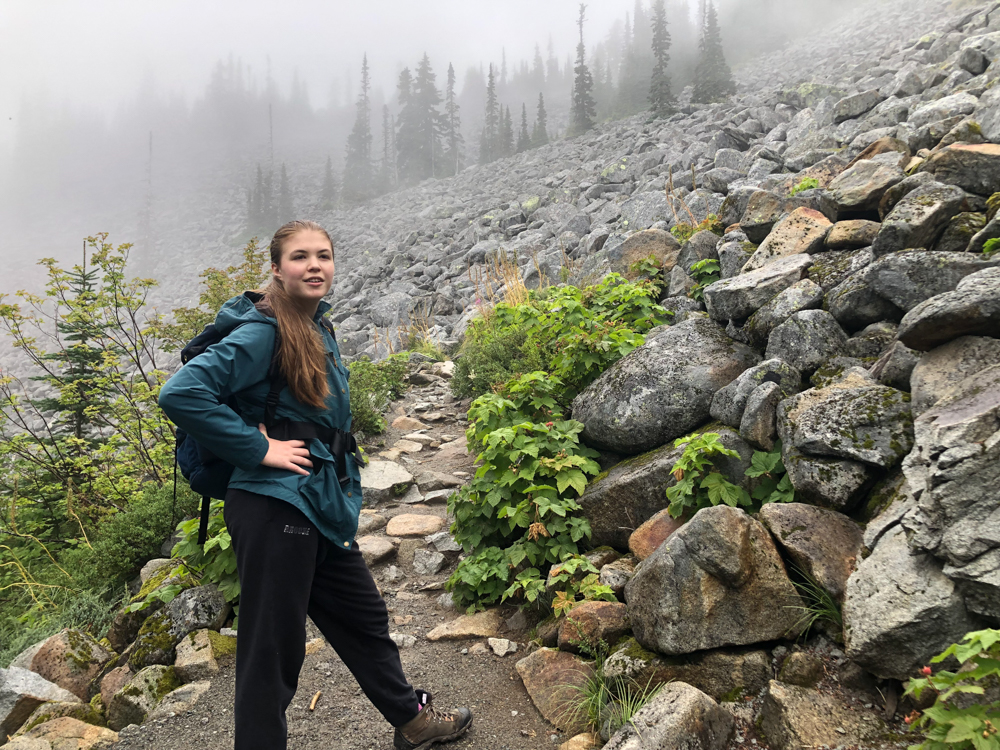
Takeaways
As with any change journey, if we have an end destination but relax our “rules” or “shoulds” for getting there, we can enjoy side paths that crop up unpredictably. Think about the last big change you encountered. What were some unexpected obstacles you had to overcome? What did they teach you? When do you most enjoy rain?
Change has taught me over the past three years that things always work out. They may not work out the way I initially expected they would, but humans are remarkably resilient and adaptable beings. I continue to learn to trust the universe and myself.
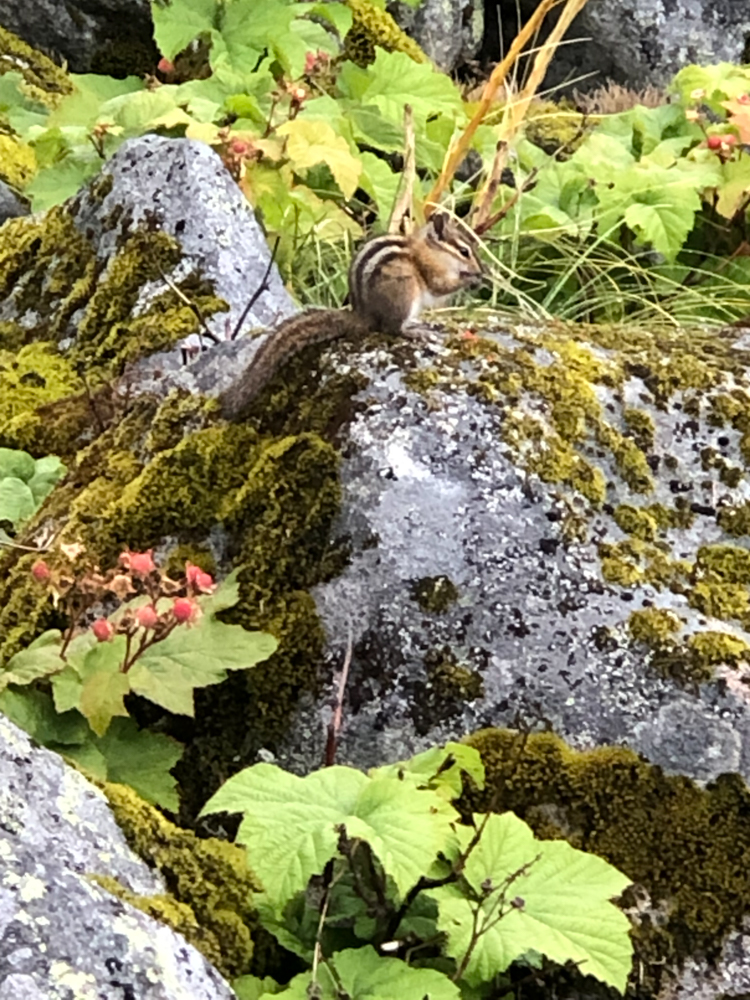
Enjoy Rain through Mother-Daughter Bonding
During the first 1.6 miles of the hike, my daughter trudged out in front of me. I hung back to shoot pictures of the bridge over the falls. Was there something more than disappointment at not charging her phone? Could I come up with a game for us to play? Were there more topics I could bring up besides what we’d already discussed in the car?
When we laughed at the wet-cat photo and enjoyed exploring the boulder field, all my worries disappeared. It turns out my daughter had an upset stomach from eating too many raisins too quickly. But she didn’t share that until we were headed down.
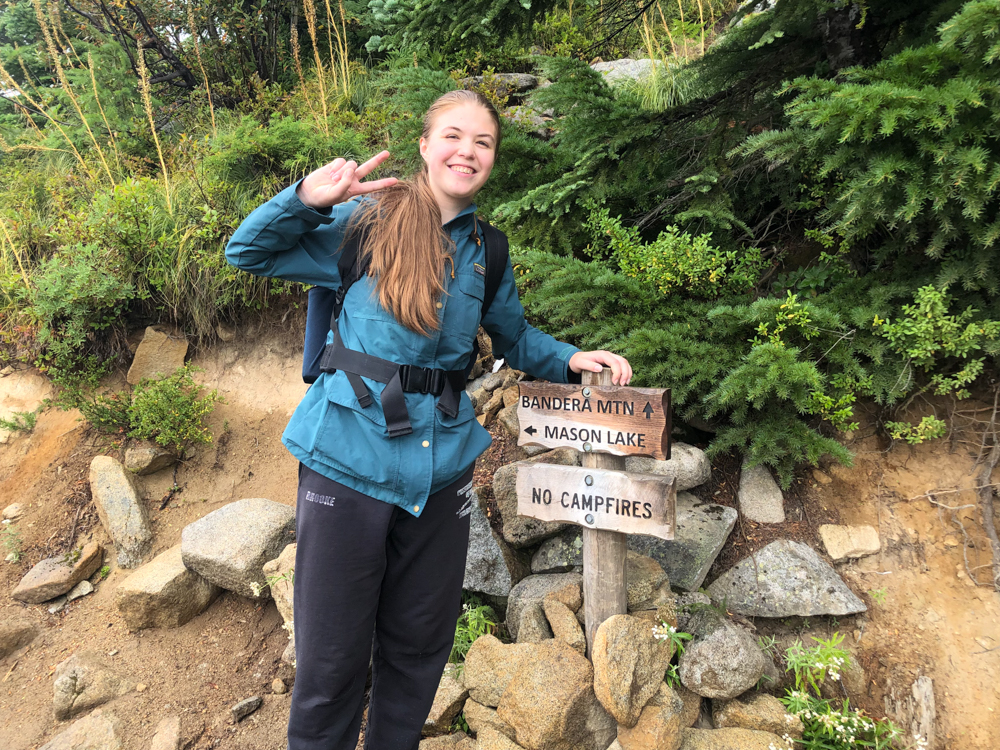
Maybe she was reflecting on everything she accomplished this summer. She aced an Intro to Quantum Mechanics course at UW, her first summer class ever. She also worked part-time helping several neighbors, entered three projects at the Washington State Fair, and passed the written test for her driver’s permit. In a week our family will be driving around the Ring Road in Iceland. If I think my life is full of change, hers is in even more turmoil. Silence doesn’t necessarily mean disappointment. It can also mean deep thinking. Perhaps she doesn’t enjoy rain as much as she says she does.
Takeaways
Our parental role over the past ten years has evolved from disciplinarian to consultant, as we relinquish responsibility and let her struggle to make her own decisions. As someone who bordered on a helicopter parent, letting go has been a challenge. However, seeing her evolve into the confident and competent young woman she is brings me immense joy.
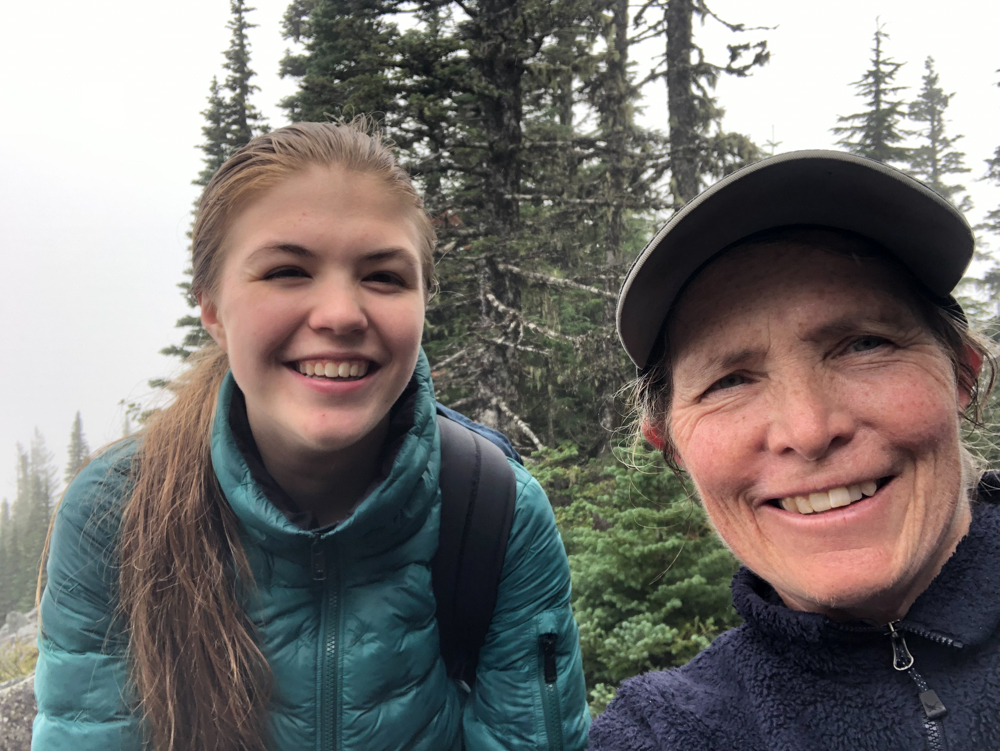
And having her along on hikes the past two summers has been a real blessing. We may not have been able to do as many this summer because of everything she has going on, but that has inspired me to reach out to other people. Her evolving role as a university student and workforce member has paralleled my evolving role as a health coach, confidant, and solo hiker. While it’s sad to leave the childhood years, I’m excited to see what comes next for us both as we move forward.
Embrace Change with an Open Heart
Hiking provides me with focused time I don’t get anywhere else. I’m looking forward to visiting Blanca Lake with my daughter in a few days, our last big lake hike of the summer before she returns to the university as a junior. When we’re in Iceland, I’m sure we’ll have inevitable conflicts and clashes that occur when three strong-willed people travel together for two weeks.
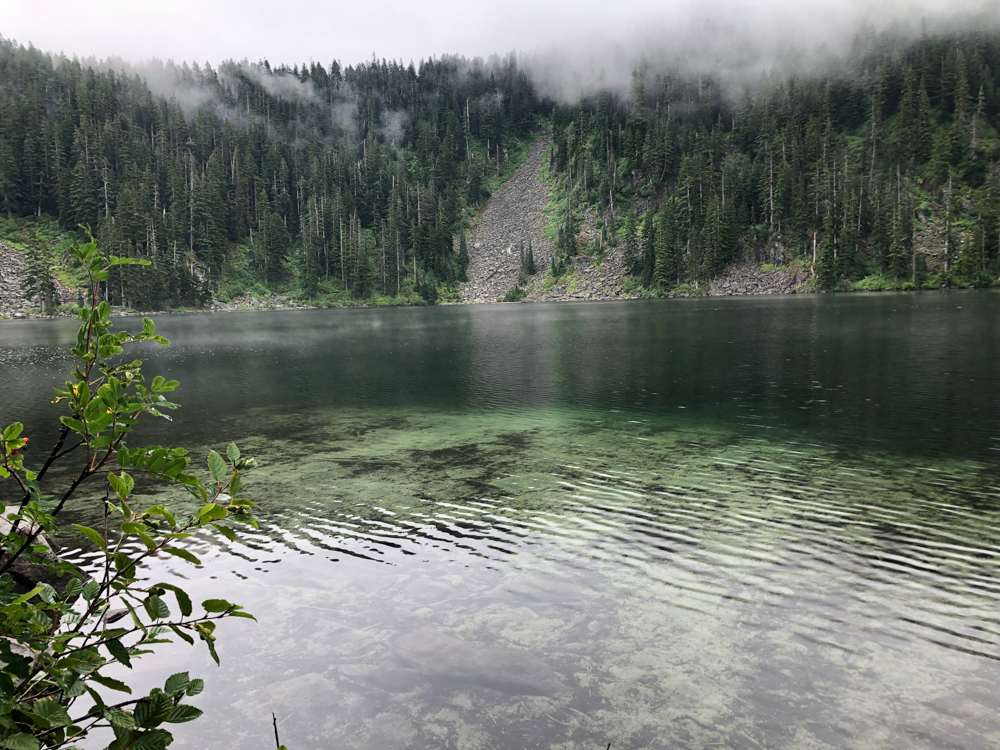
Whatever change you are experiencing, nature can guide and inspire you. I always have more clarity when I return from a walk with Ajax or a hike in the woods. Perhaps the single most important revelation for me is I am more present away from home than in any other place. I notice things I don’t see anywhere else. I’m ready for the next chapter.
If you have any tips on how you enjoy rain, or revelations you’ve gleaned from your time in the mountains, please share them below. I love hearing comments from readers.

